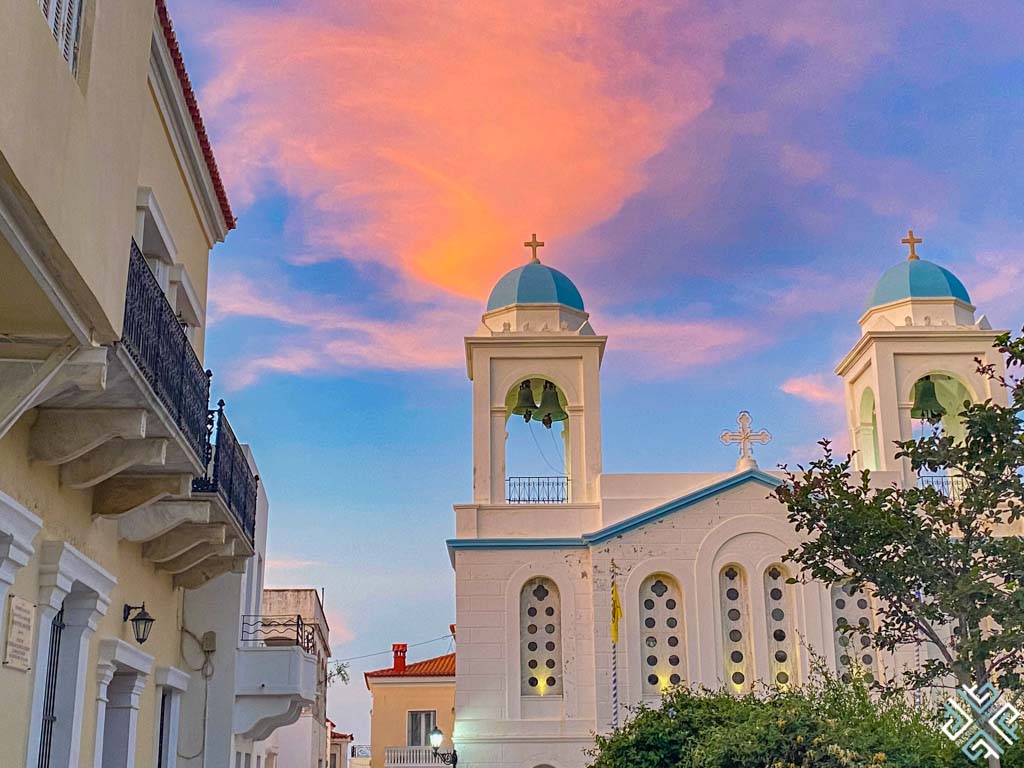The Tortuguero National Park is one of the most profoundly beautiful destinations in Costa Rica and one of the most important nesting sites for Green, Leatherback, Loggerhead, and Hawksbill sea turtles. A place of serenity and rich biodiversity it is a destination that gifts every traveler with an enriching and meaningful travel experience. Discover our reasons to visit the Tortuguero National Park in Costa Rica.
7 Reasons to Visit the Tortuguero National Park in Costa Rica
Where is Tortuguero Located?
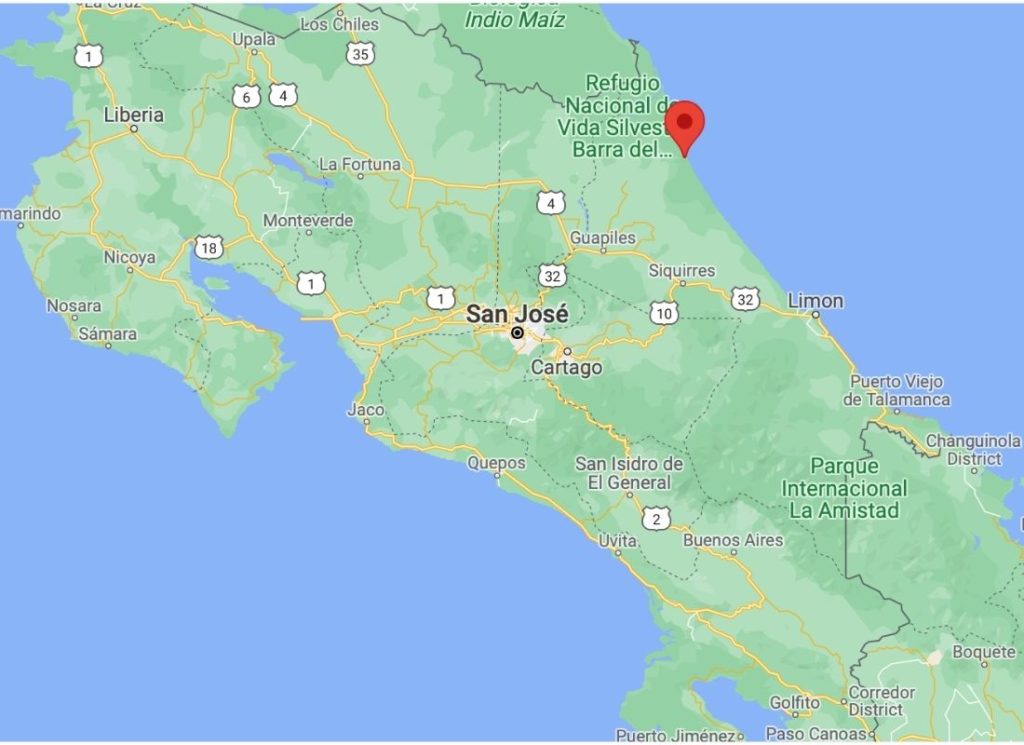
Tortuguero is located in the Limon Province about 80 kilometers from Limon, on the northeast Caribbean coast. The park covers an area of 77,032 acres (31,174 hectares) of which 52,000 acres (21,000 hectares) are in the Atlantic ocean. Tortuguero experiences very high humidity throughout the year and there is no dry season as it rains throughout the year. Be prepared, we’ve warned you!
Book your three-day Tortuguero experience from San Jose here, alternative you can also visit Tortuguero on a day trip from San Jose.
You might also enjoy this post: 22 Trip Defining Activities To Do In San Jose, Costa Rica
How to get to Tortuguero
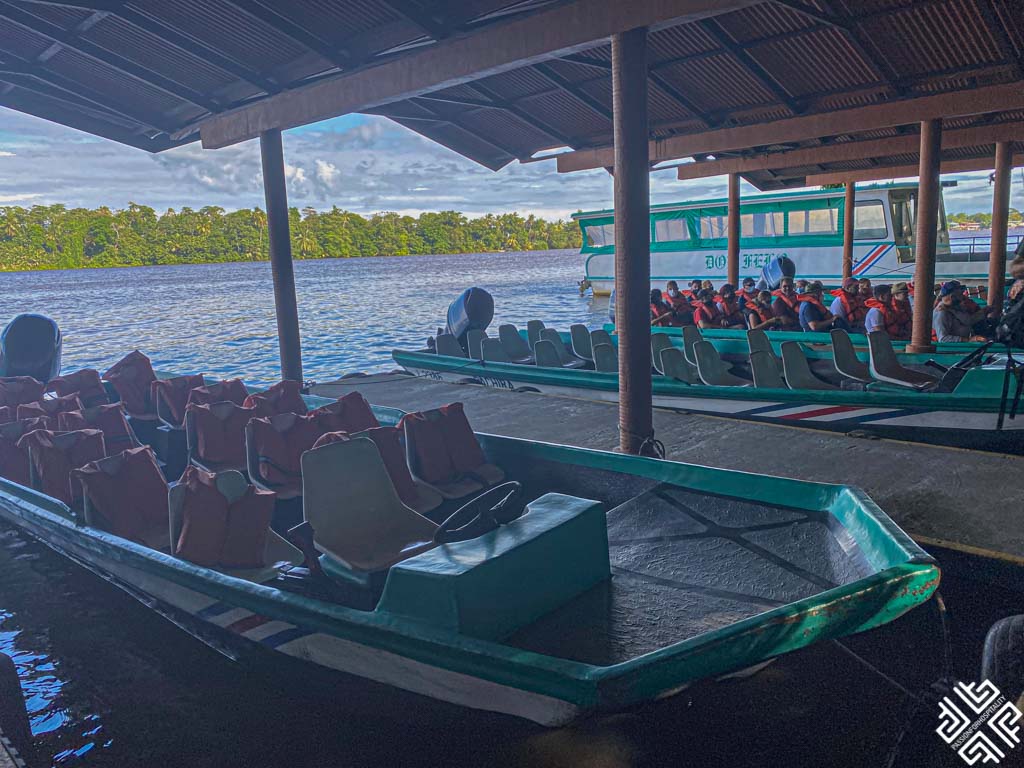
To reach the remote area of Tortuguero Village is only possible with the use of small boats that cross the rivers or fly to Tortuguero Airport. For visitors who are staying at one of the Tortuguero lodges, transportation is usually included in the package.
The History of Tortuguero
The first settlers of Tortuguero were closely related to the Mayas (the ancient civilization that developed the science of astronomy, calendar systems, and hieroglyphic writing) in Mexico.
They merely survived on hunting small game, wild birds, fishing the rivers, and capturing the turtles that would come to shore to hatch their eggs. The northern Atlantic coast of Costa Rica was part of the Mayan trade route, that extended all the way from Mexico through Central America. The Mayan emperor instructed the scouts to make voyages to Nicaragua and Costa Rica in search of gold, most of which was transported back to Mexico, and only some was used by the local Indians to make small figures and ornaments.
The next notable era was the colonial period, and the first Spanish settlement was founded in 1541 to help expedite trade between Panama and Nicaragua. A series of short-lived Spanish settlements continued to appear until the mid-1700s. The area became a cacao plantation site which was eventually abandoned in 1848.
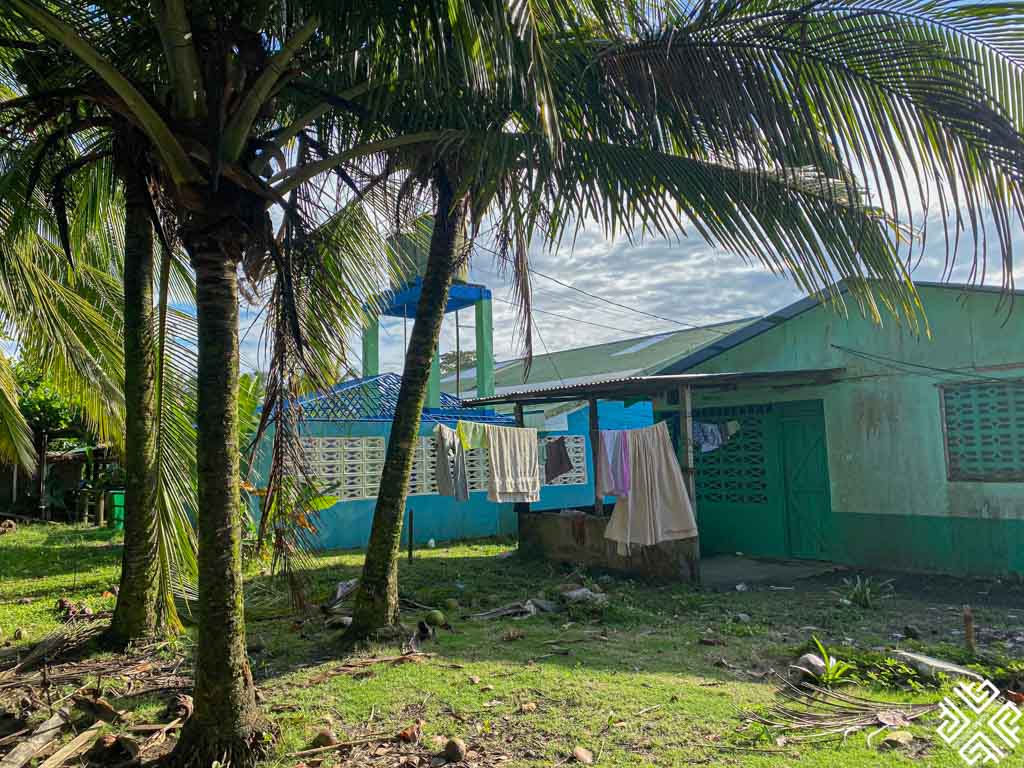
In the 1940s Tortuguero experienced a prominent lumber era. The opening of the first sawmill drastically improved the livelihood of the locals as transportation improved, a school was established and frequent visits by a doctor became possible. The lumber companies enriched the lives of the local farmers who would now receive a steady income.
The sawmills stood at the place where the boat landing is located today, and when the mills were in operation, logs were floated down from the forest, in turn, sawn into broads and then shipped to Limon and then marketed in Costa Rica and abroad. The working days were extremely long and work would begin at around 5 am and continue well into the evening, until around 7 pm when everyone in the village called it a night. On weekends the village would come to life with dancing and singing.
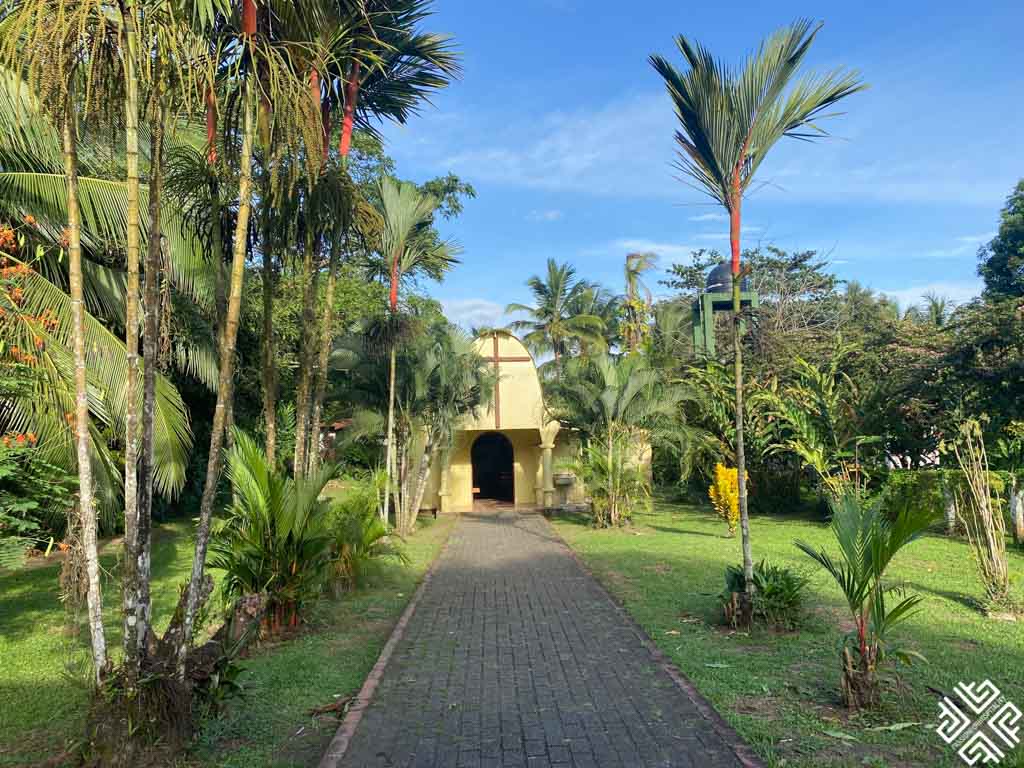
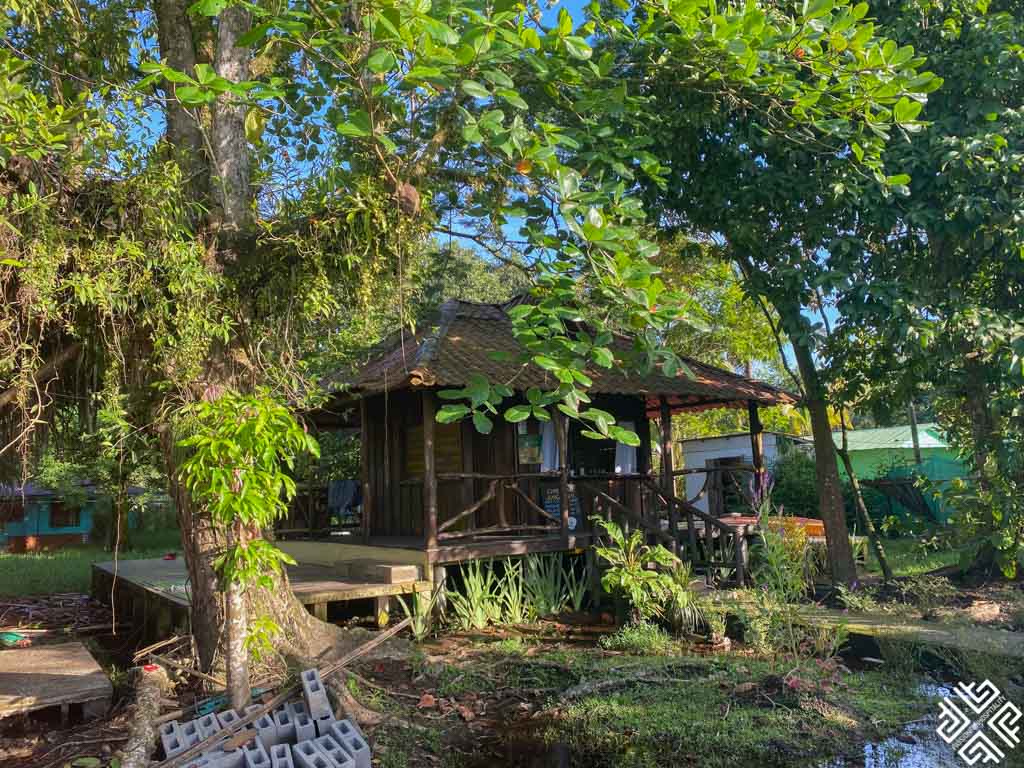
Unfortunately, the lumber era came to an end and as the lumber companies closed one after the other, the village followed a period of economic hardships. The old families went back to the old ways of life, engaging in daily activities such as fishing, keeping cows and pigs, growing cassava and bananas, hunting for crocodiles and hawksbill turtles for their shells.
Experience staying in a real jungle
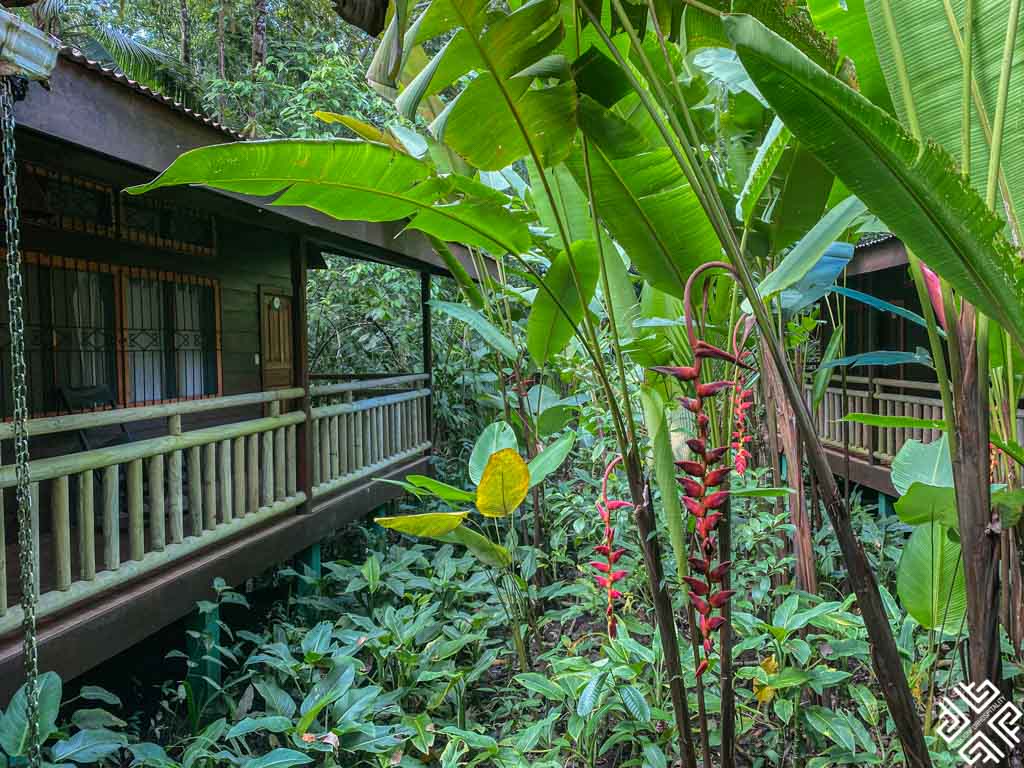
A visit to Tortuguero is a fantastic way to experience staying and sleeping in a real jungle. Visitors are invited to immerse themselves into the natural habitat with thousands of live plants and animal species and get to experience the natural wonders of planet earth.
Visit the Sea Turtle Conservatory
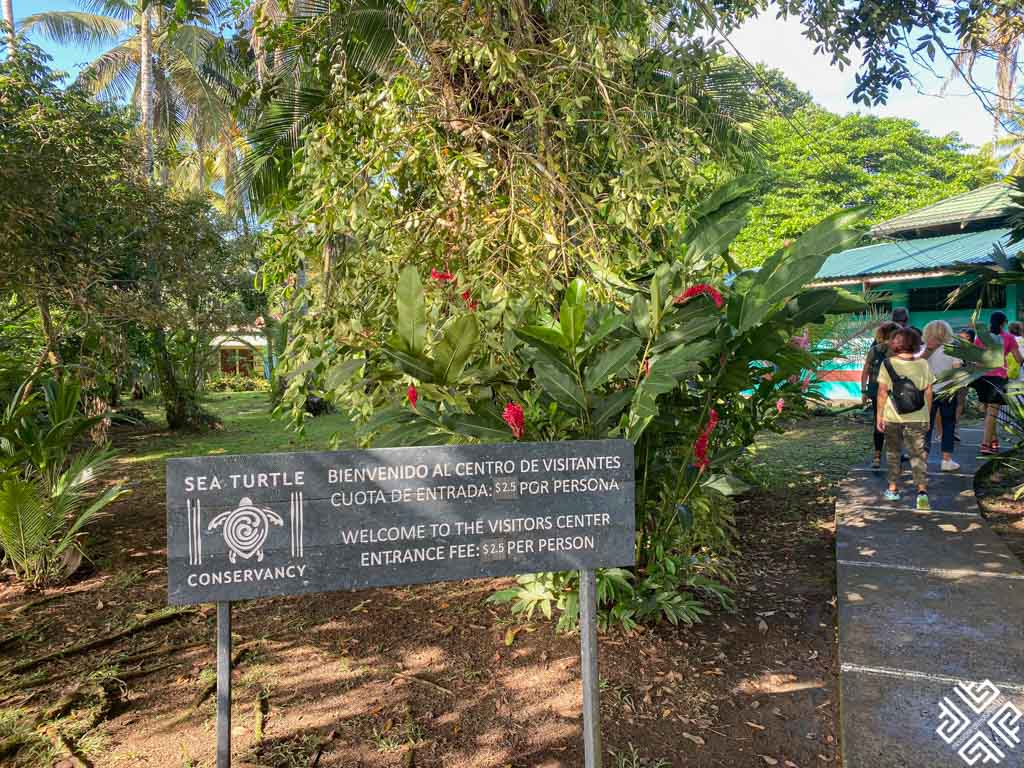
In the 1700s Tortuguero was famed among the merchants and seamen for the thousand turtles that nested its shores as Europeans would trade for the valuable turtle meat. The creation of the railroad which was completed in 1890, gave way to an even bigger wave of green turtle exportation. In 1912 a massive boat called Vanguardia was regularly collecting turtles and bringing them to Limon before they were shipped to the United States and Europe.


In 1956 Dr. Archie Carr founded the Caribbean Conservation Corporation and dedicated enormous efforts to protect the green turtle nesting beach of Tortuguero which is the largest site in the Western Caribbean.
The tagging program runs from July 10 until September 15 and is run by locals and international volunteers. After the turtle has laid her eggs, each new turtle is marked on her front flipper with a tiny metal flag, that is marked with an identification number and return address.
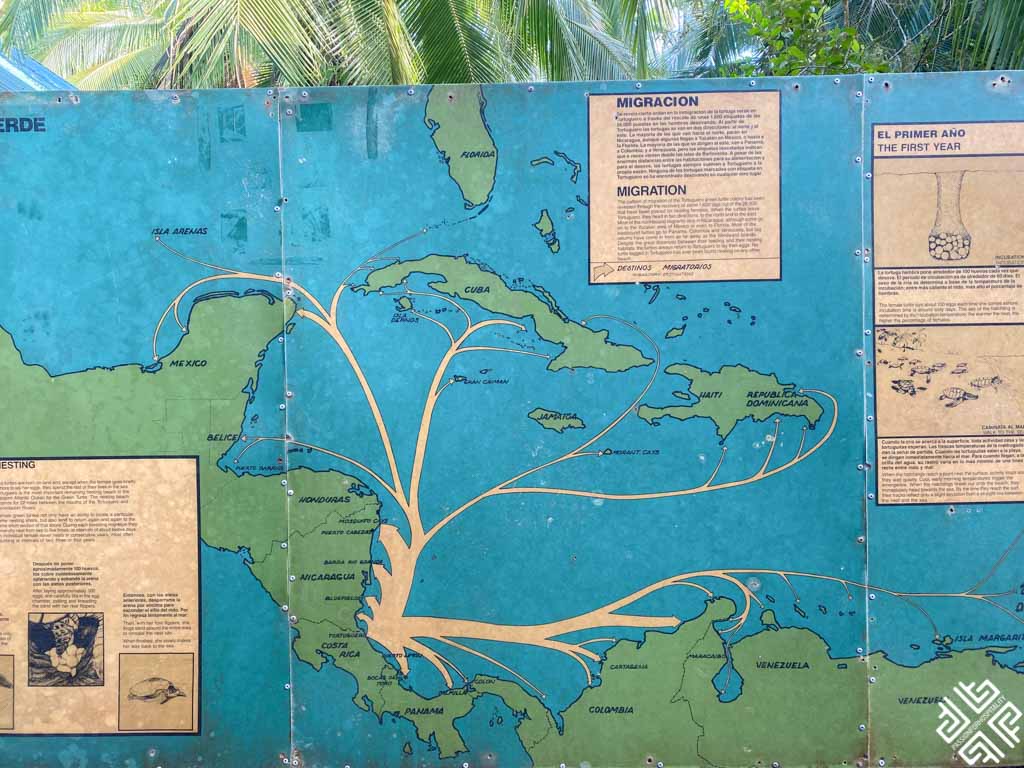
This remarkable research paved the way to bringing awareness of the over-exploration that the colony was suffering and in the 1960s laws were finally enacted to protect the nesting turtles and their eggs. In 1970 the nesting beach and all of the critical shore became part of the Tortuguero National Park.
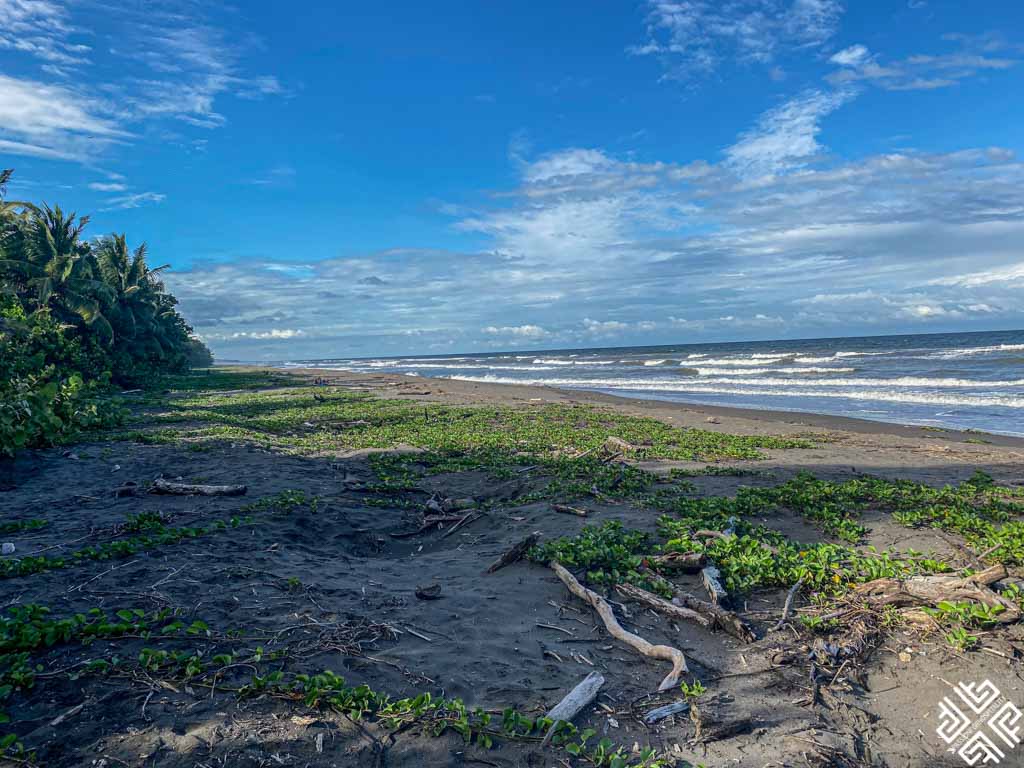
Visitors are invited to explore the Sea Turtle Conservancy Tortuguero Visitor Center which is located right in the heart of the Tortuguero village and learn all about the different species of turtles that nest in Tortuguero, their life cycle, migratory routes, and much more.
The turtle laying season is April to May for the leatherback turtles and July to October for the green turtles.
Discover the fascinating plant and animal species – one of the reasons to visit the Tortuguero National Park
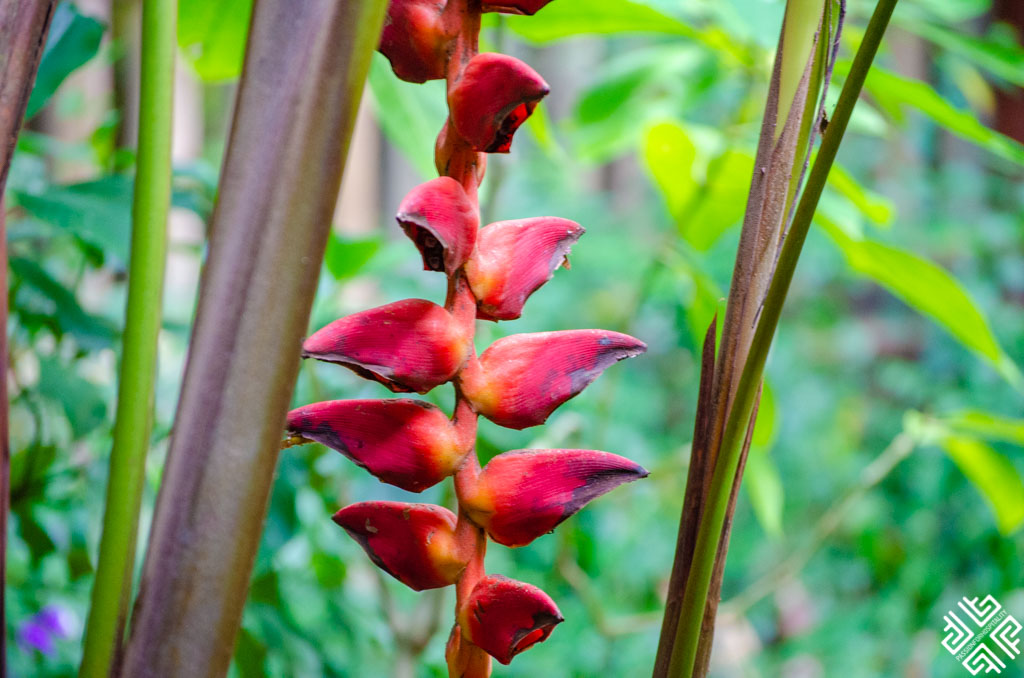
While Tortuguero has mainly become famous for its endangered turtle species attracting visitors from all corners of the world, the whole Tortuguero National Park is teeming with vibrant wildlife and plant species. There are more than 400 trees and 2,000 plant species in Tortuguero, with the oldest recorded tree being the almond tree. Nature works in mysterious ways and observing the whole ecosystem is not only fascinating but equally rewarding.
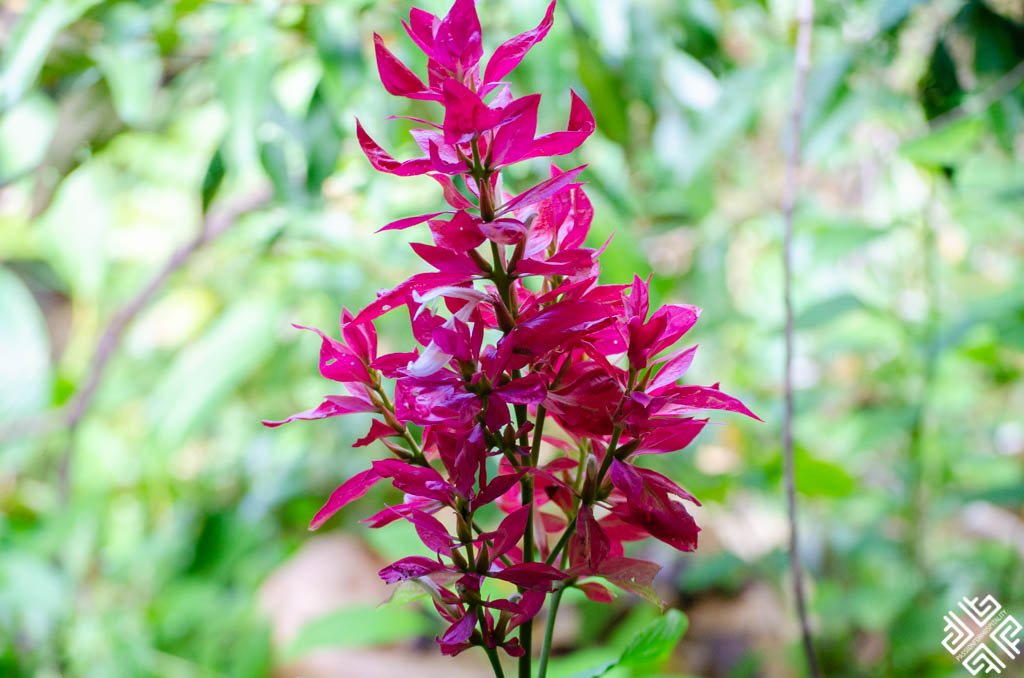
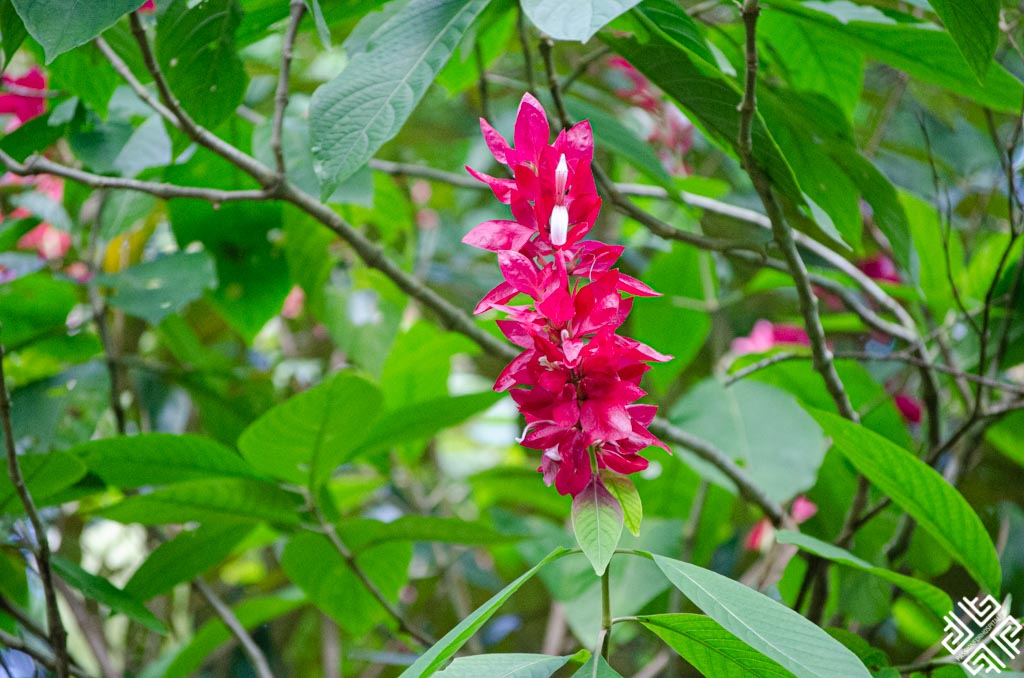
Tortuguero is home to three monkey species: the mantled howler, the white-headed capuchin, and the Central American spider monkey. And admiring these joyful creatures in their natural habitat is an absolute delight.
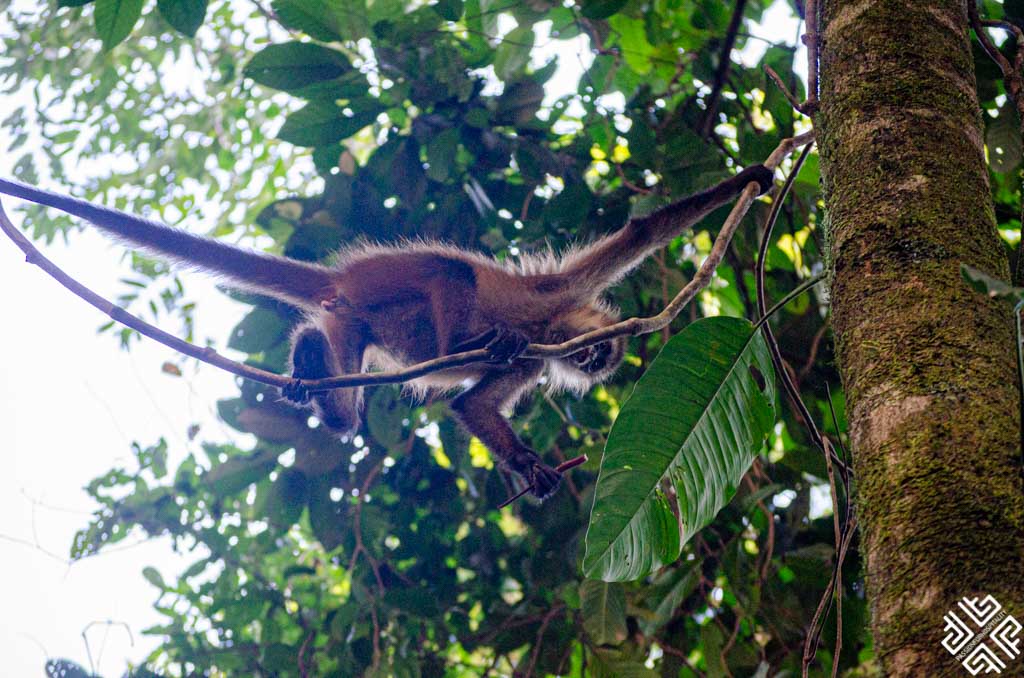
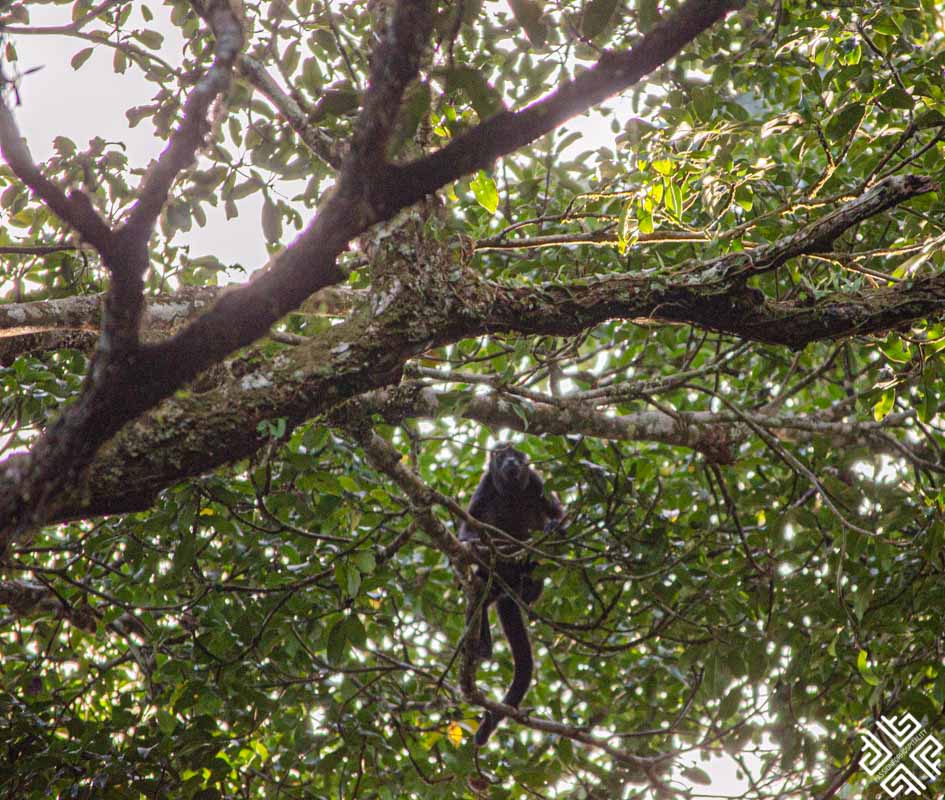
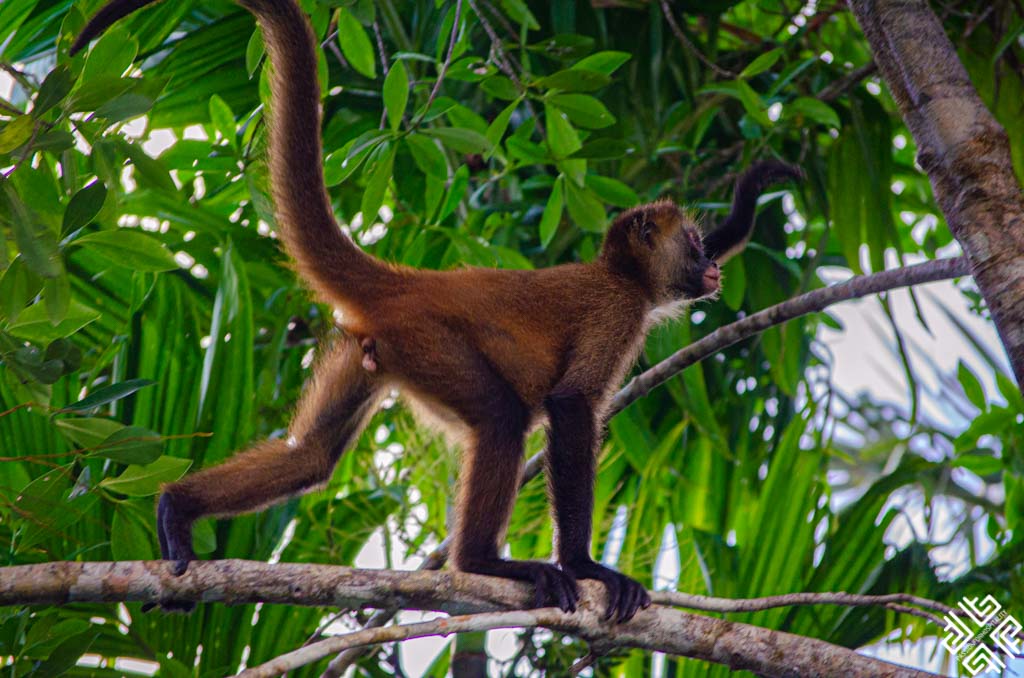

Be prepared to witness the presence of the howler monkeys especially at night, their yowl can be heard from up to three miles away and the sounds will surely wake you up. Males use their specialized vocal chambers to amplify their sound and to mark their territory. These species come in three colors, black, brown, or red and they use their tail as another arm, as they rarely descend to the ground. The spider monkeys forage in the high canopy and they primarily eat fruits, leaves, and flowers. Their ideal surroundings are moist rainforests. In fact, you can see more animals right after the rain.
Visit the Tortuguero National Park
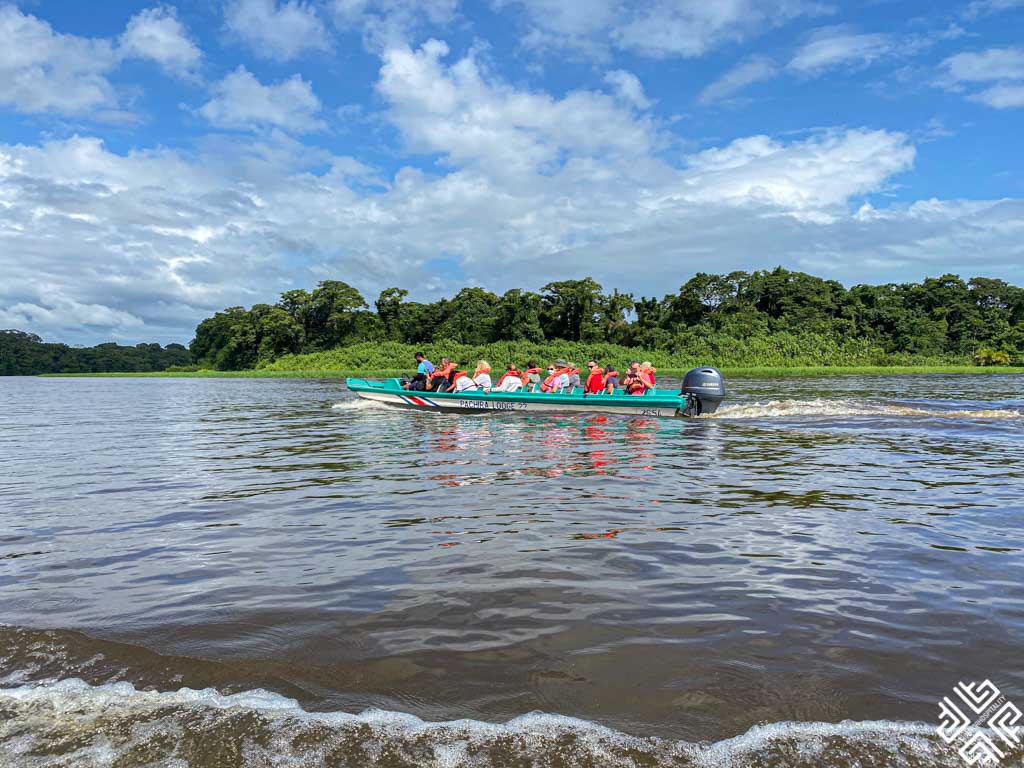
While staying at one of the Tortuguero lodges, guests are invited to explore the richness of the Tortuguero National Park. Guided boat tours are done on medium size boats with a motor and take guests to see the wildlife, jungle, and canals. Another option to experience the park is on a canoe, which is silent and can easily access parts of the natural habitat that these larger boats cannot.
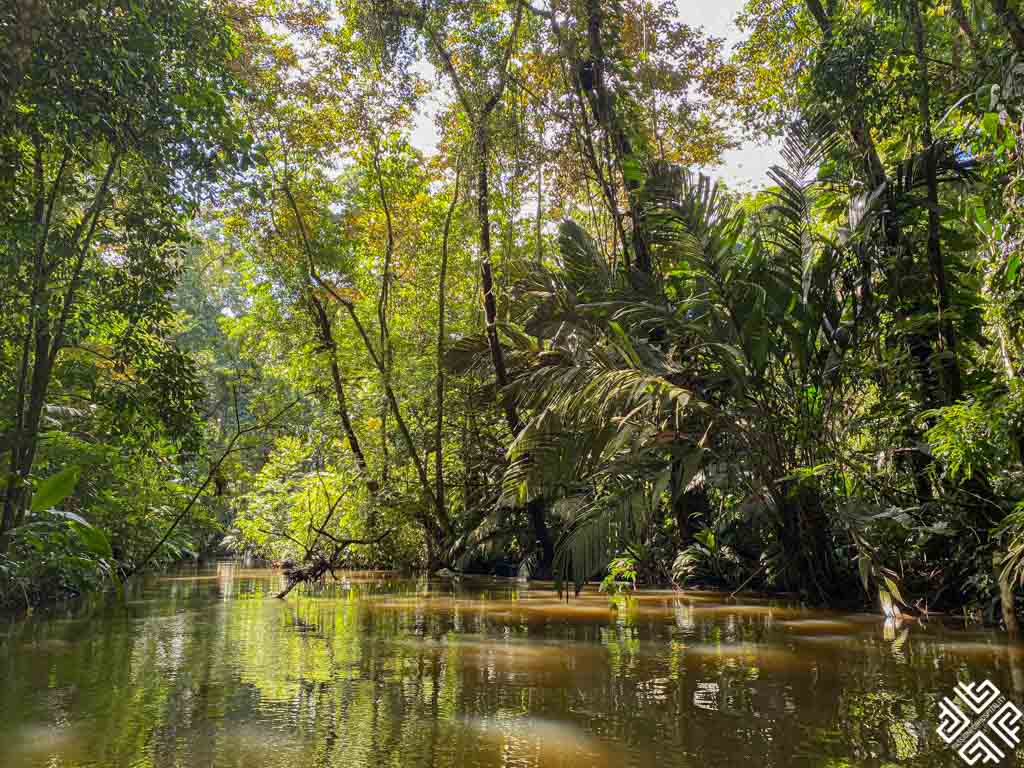
On our tour we spotted many iguanas, the green iguana is native to Central America and is nicknamed the gallino de palo “bamboo chicken” or “chicken of the trees”. While they are often found in trees, they also like to live near the water. Although they are called green iguanas, they do actually come in many different colors.
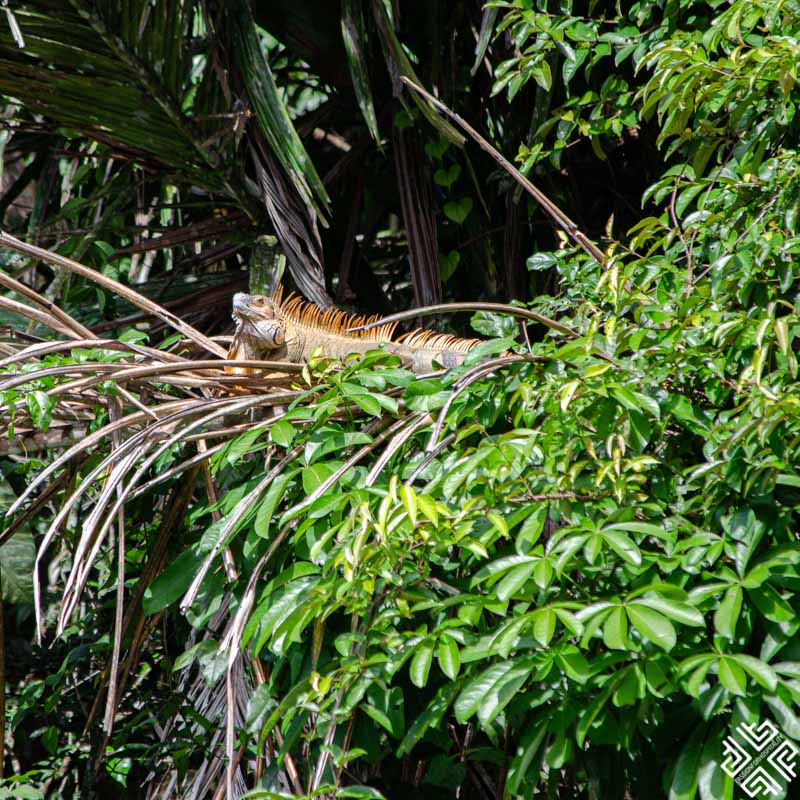
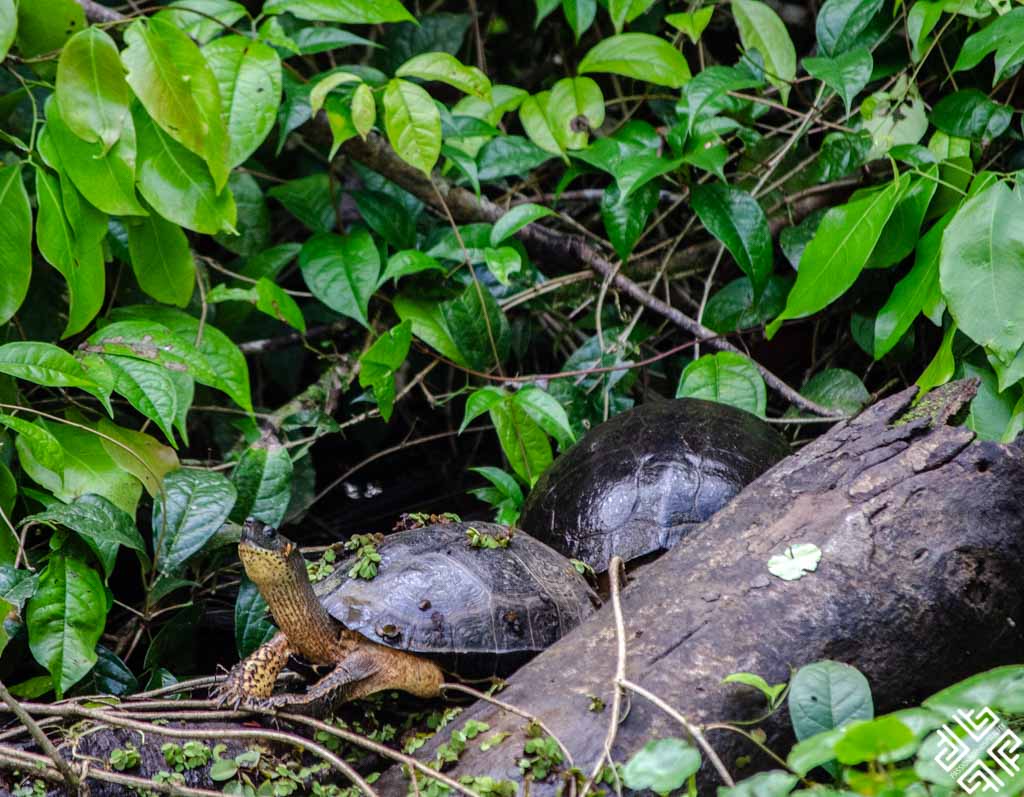
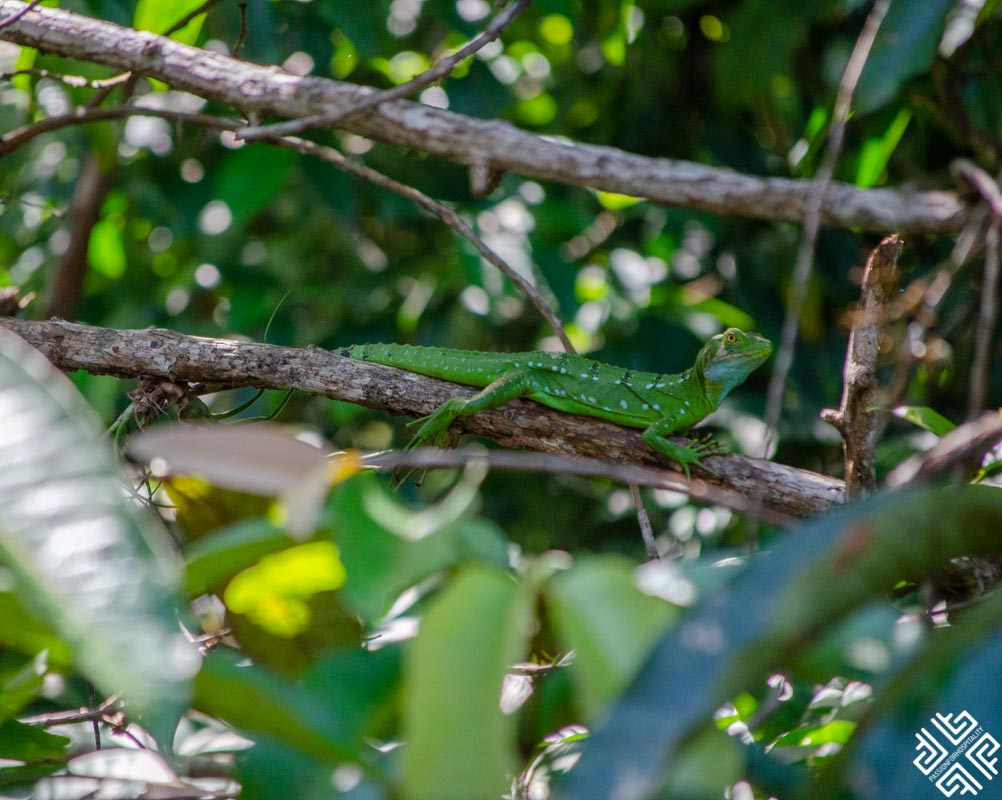
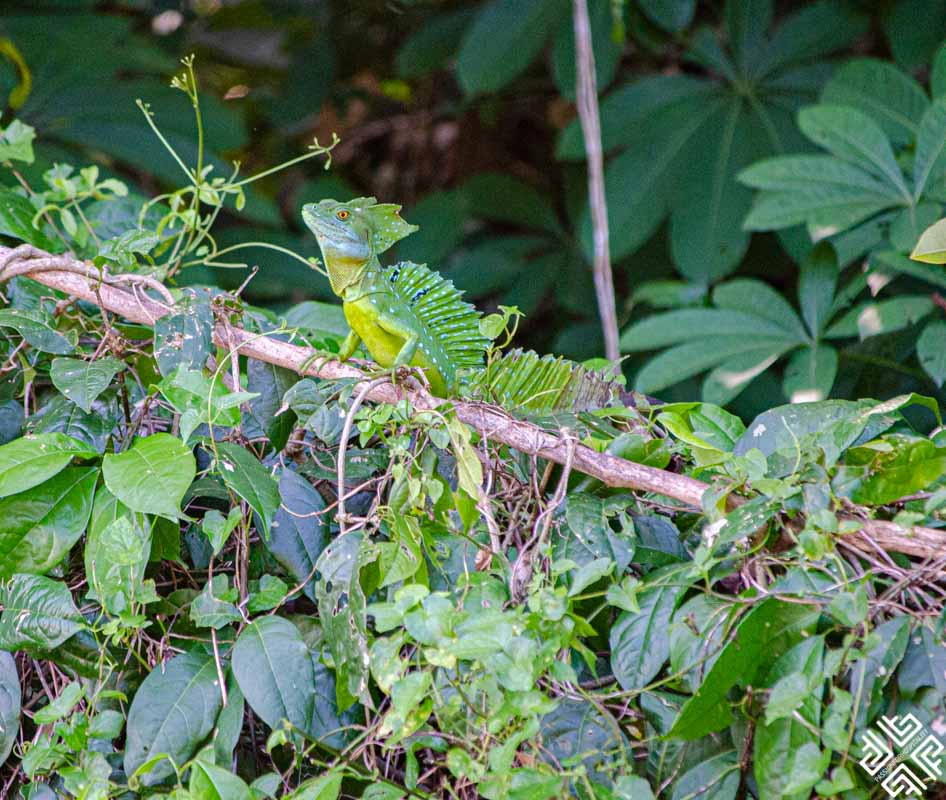
Another reptile that you don’t want to miss is the caiman crocodile, there are 6 species found in the watery jungle habitats of Central and South America. They are relatively small, except for the black caimans and they feed off fish, insects, and small reptiles.
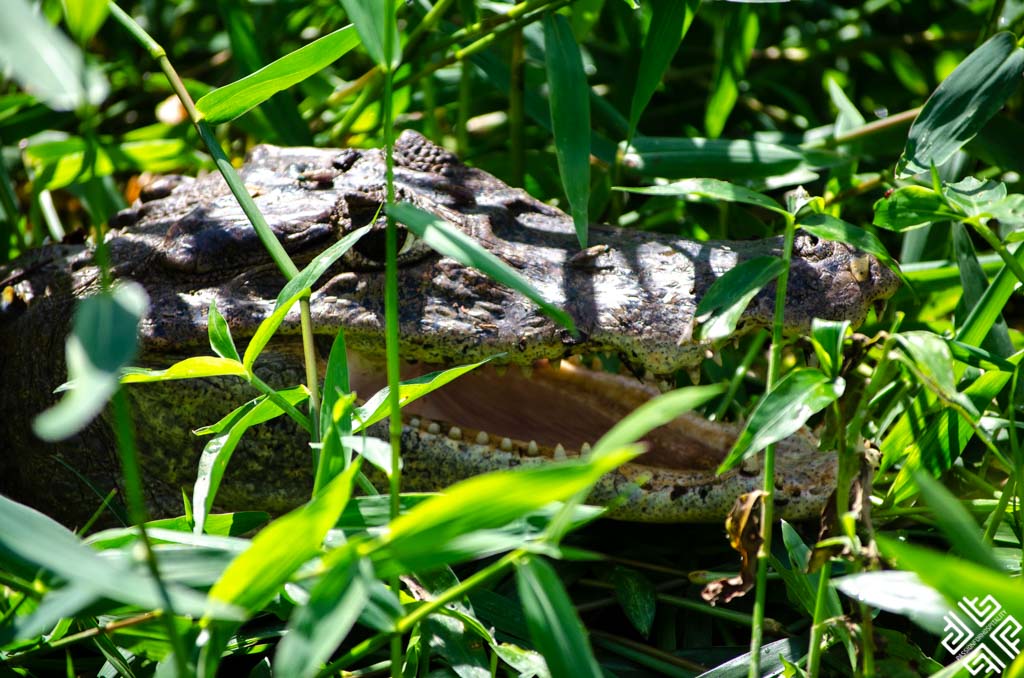
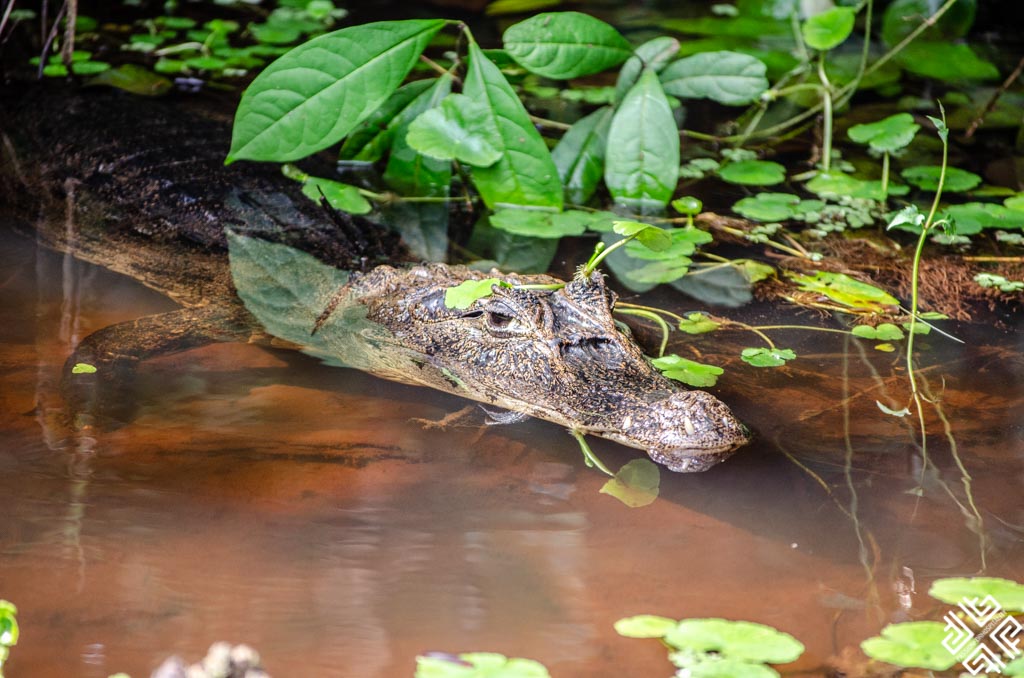
Snakes although not always easy to spot are frequently encountered in the jungle. There are a total of 140 types of snakes in Costa Rica and 21 are poisonous. Therefore please watch your step and wear closed shoes. Don’t forget to wear plenty of repellent and bring your cameras.
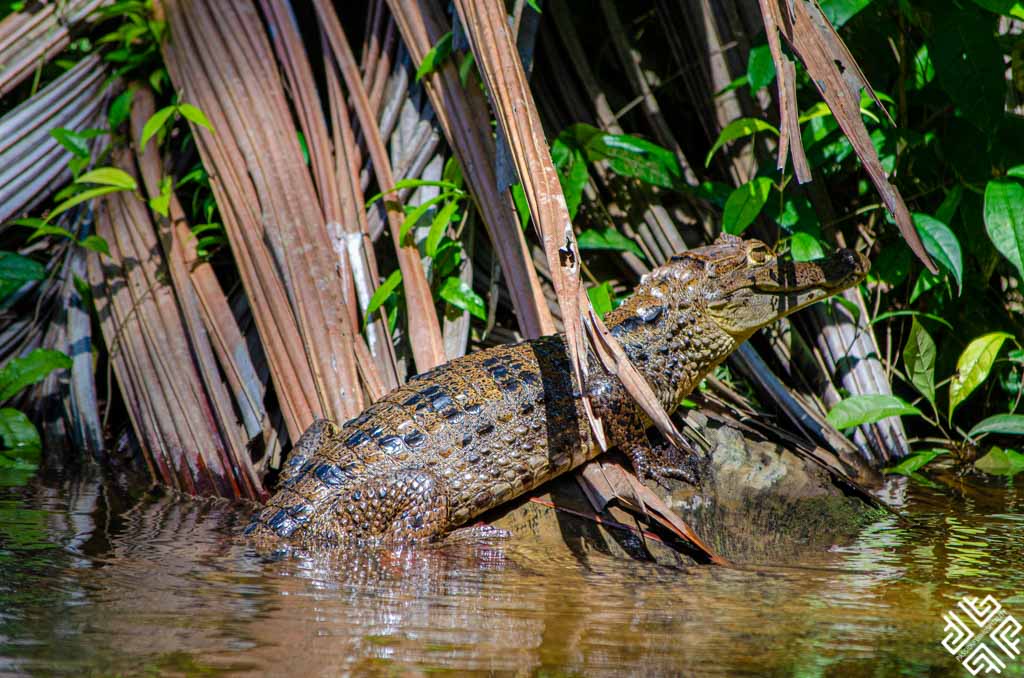
Admire the remarkable bird species
Almost half the bird species of Costa Rica, approximately 350 live in Tortuguero National Park. On our tour of the National Park, we admired the bare-throated tiger heron in its quest for lunch. They usually eat fish, frogs, and flies. These short-legged birds live in mangroves and freshwater marshes. You can often find them in areas with trees. They have cool tiger-like stripes feathering.
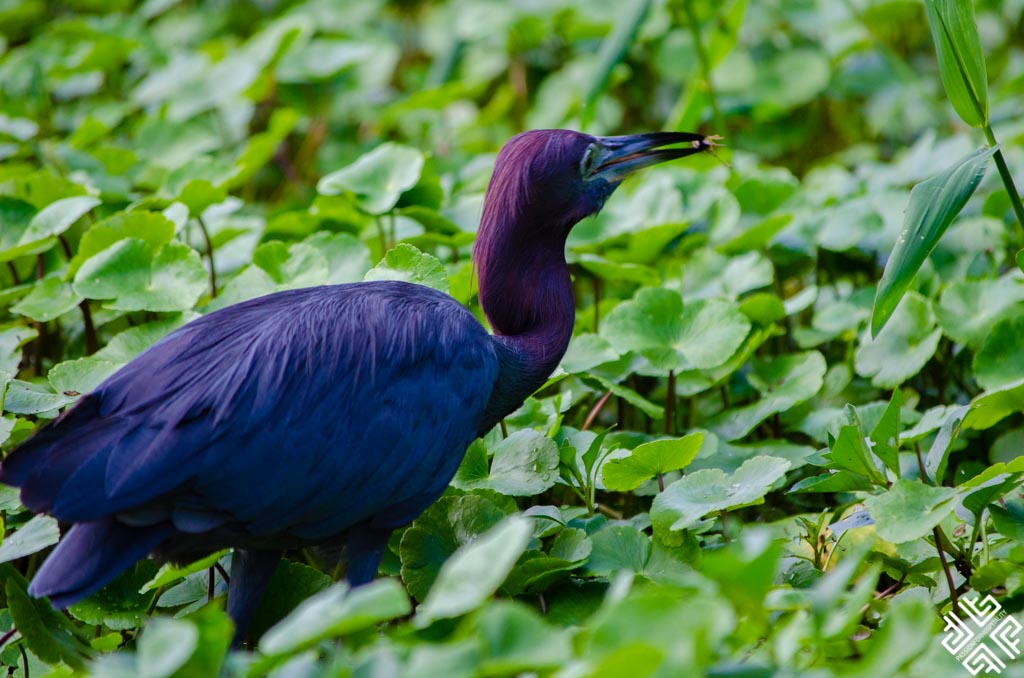
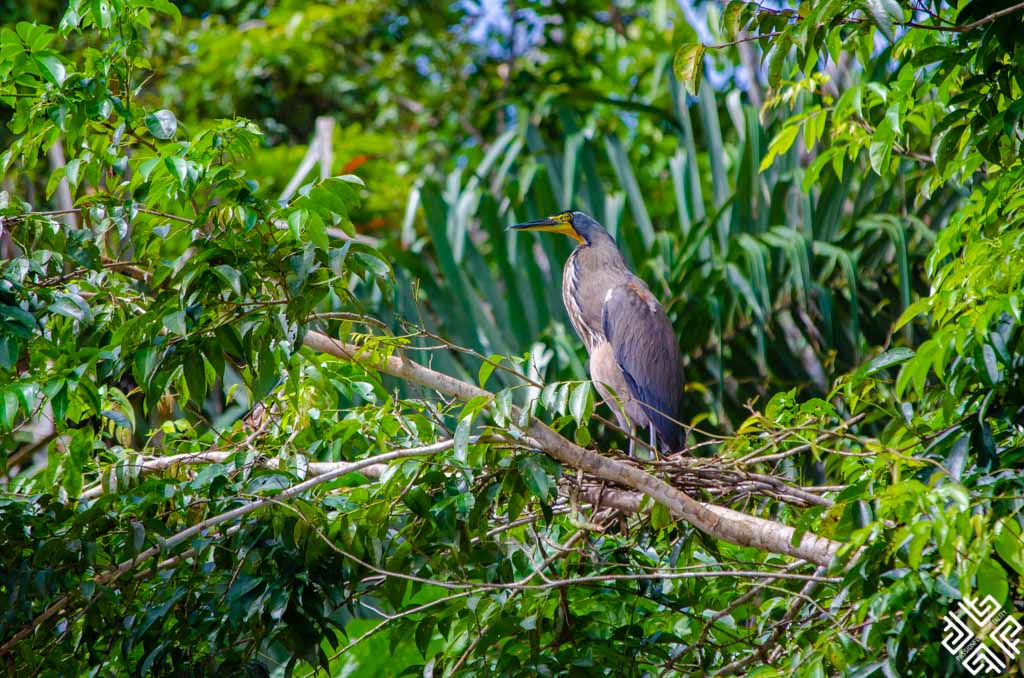
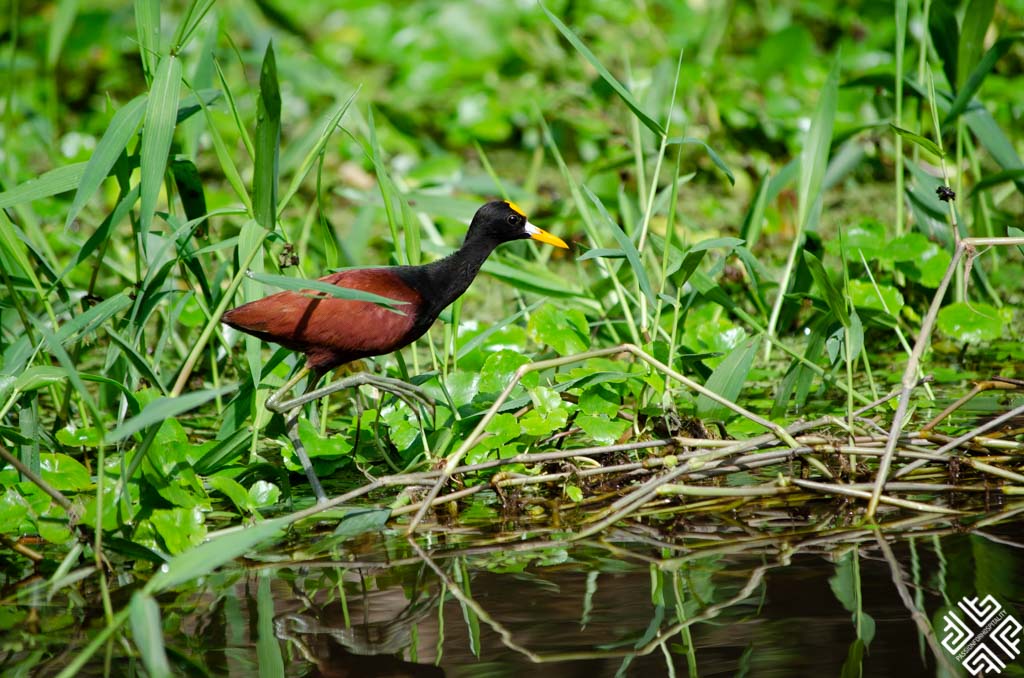
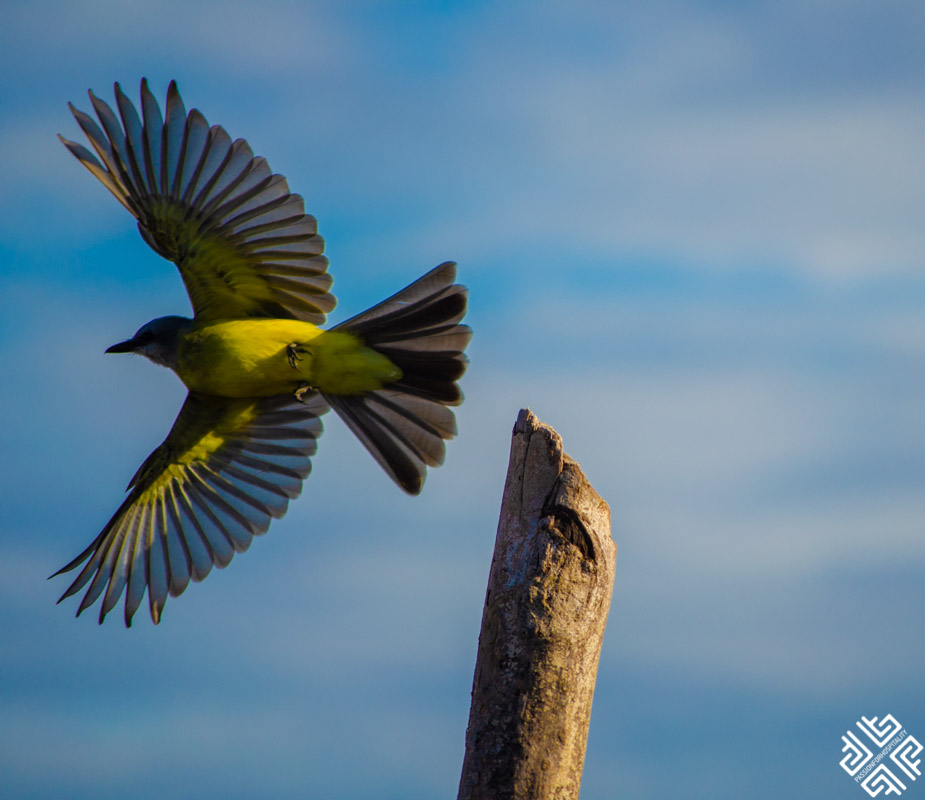
Another bird species that you will surely not miss is the Toucan, there are several types one of which is the Ramphastos swainsonii or the Black-mandibled Toucan. They mainly feed on fruit but also on insects rodents, small birds, and lizards.
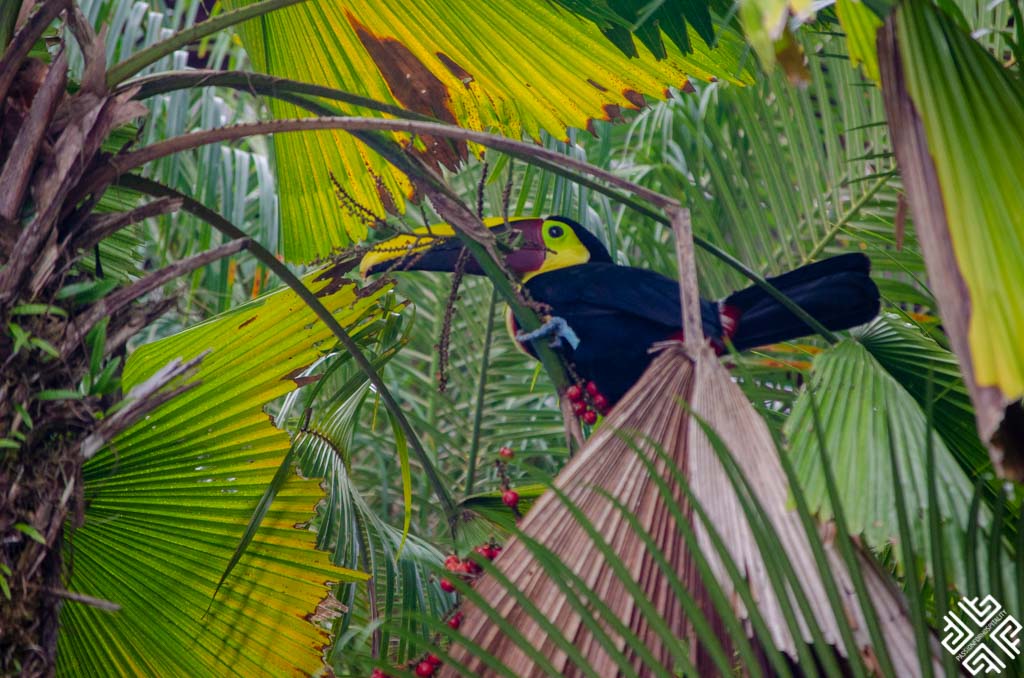
Go souvenir shopping and enjoy the relaxed vibes of Tortuguero Village
The vibrant and colorful village of Tortuguero is the perfect place to feel the authentic vibe. There are two hotels that are located outside the village, the rest are a short boat ride away.
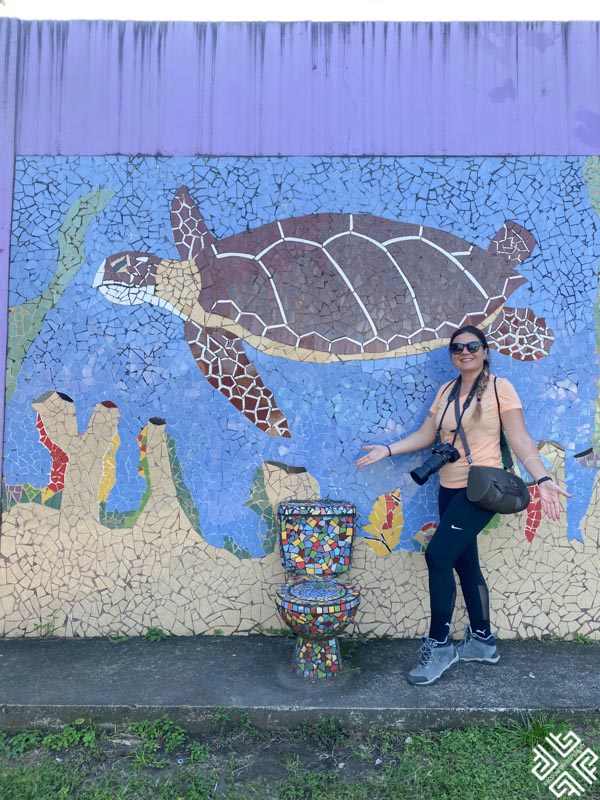
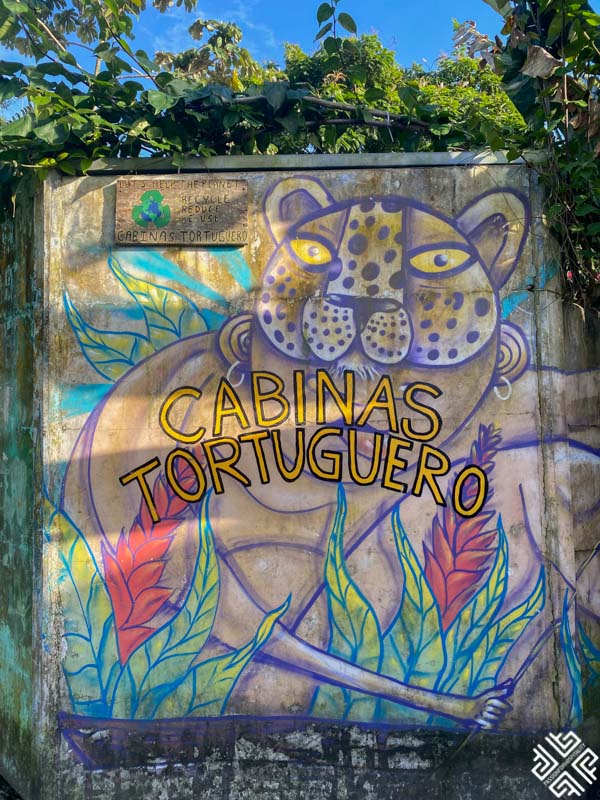
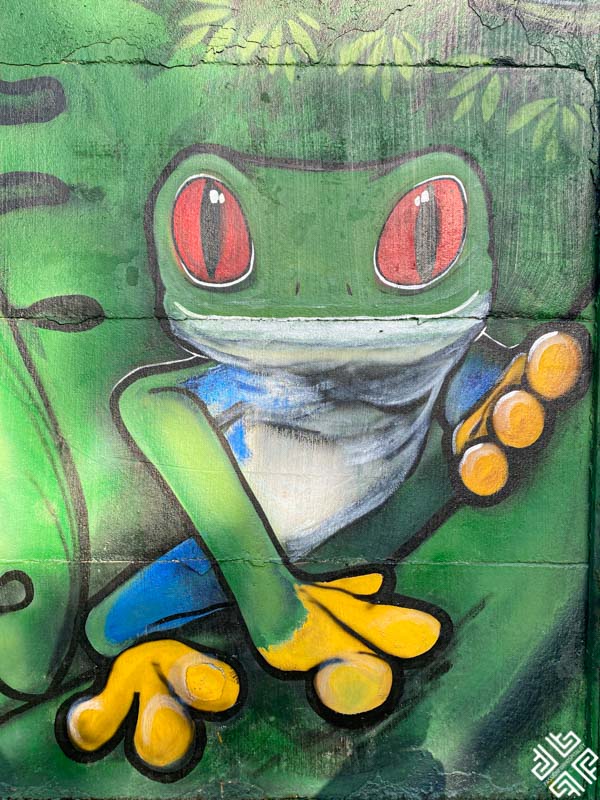
The village is decorated with lively graffiti art, depicting the wildlife of Costa Rica, and here you will find numerous small shops selling local crafts. In the village, you will also find several cafes and restaurants.
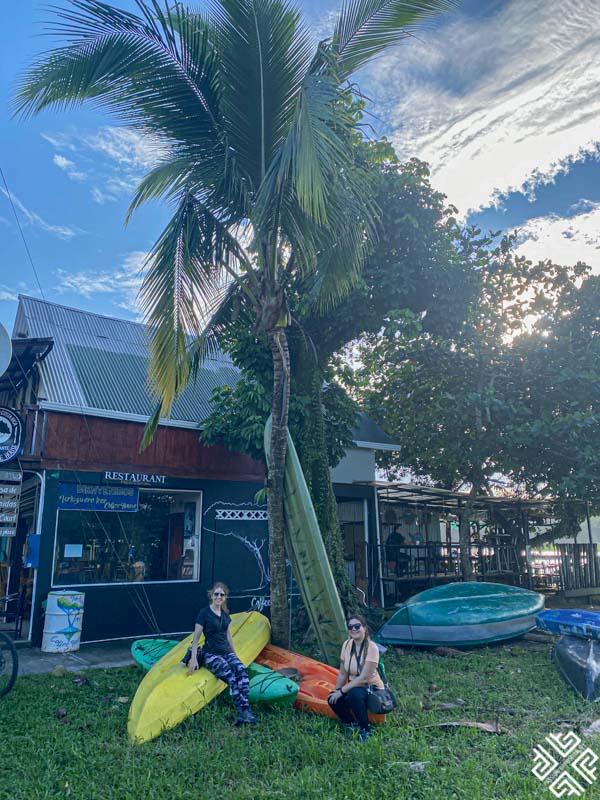
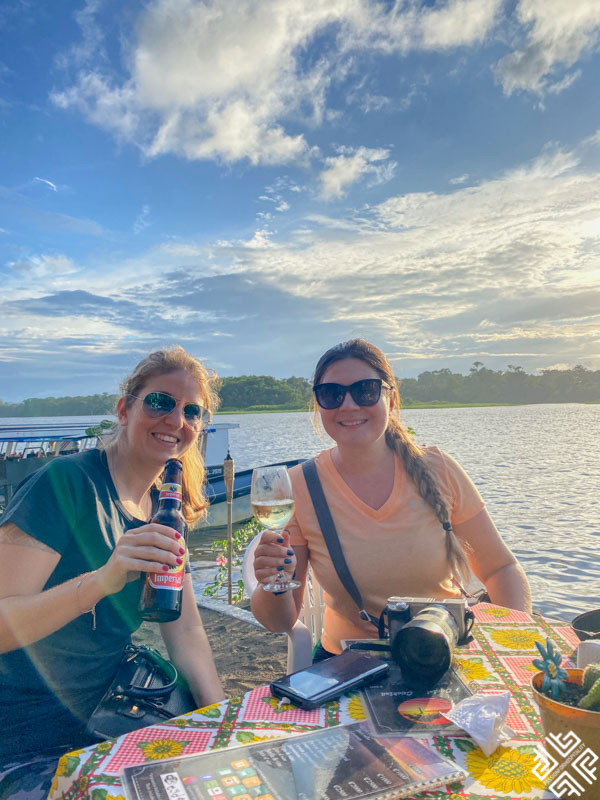
A cool spot for sunset watching and drinks is the bar which is located on the left-hand side right next to the boat dock.
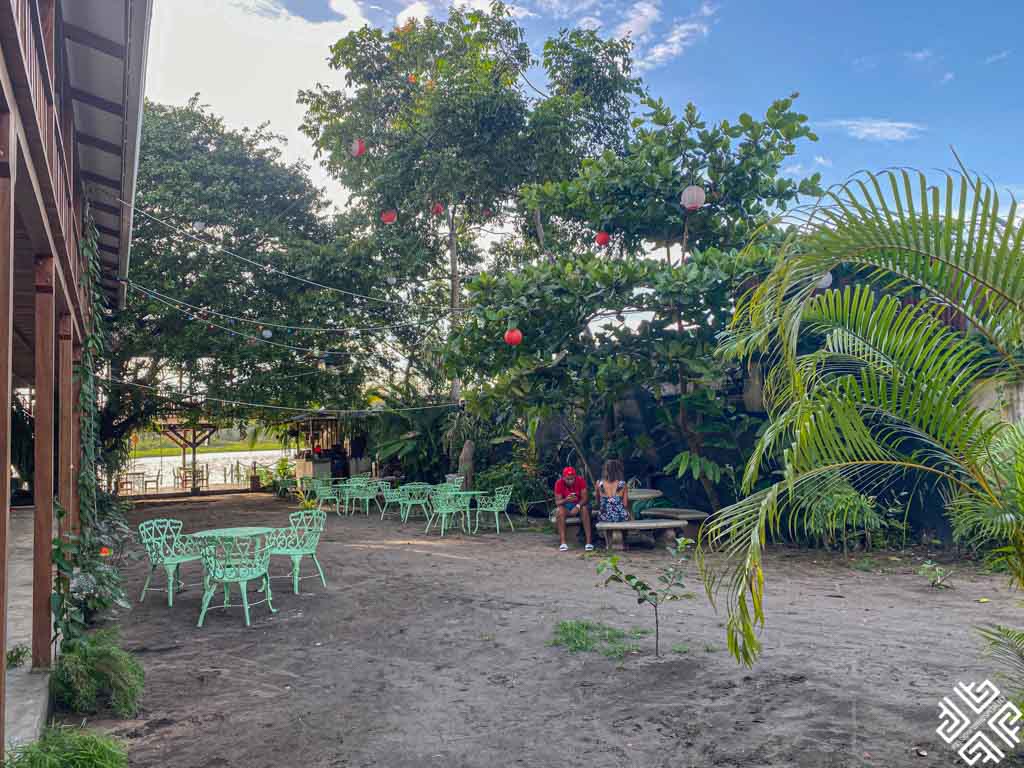
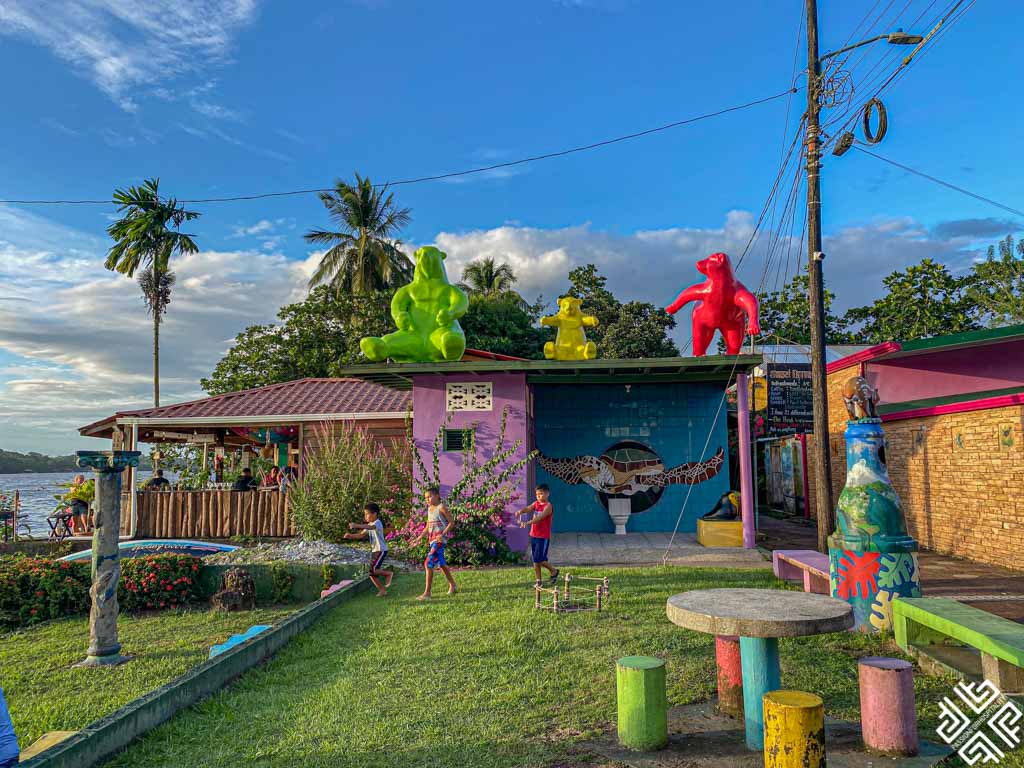
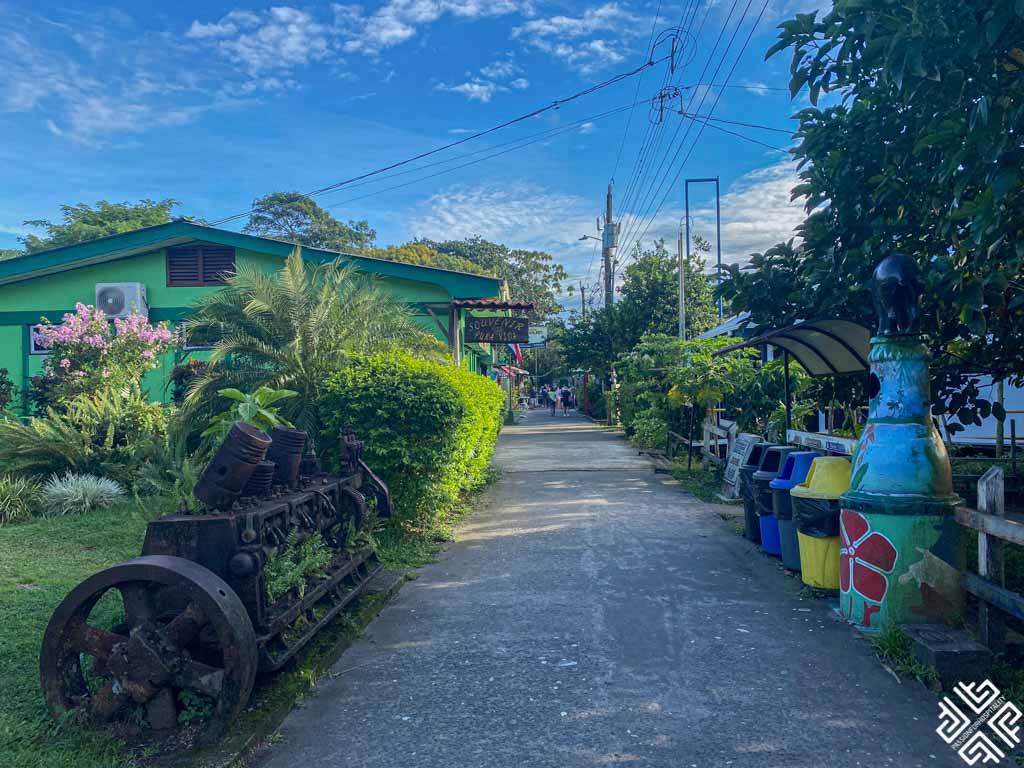
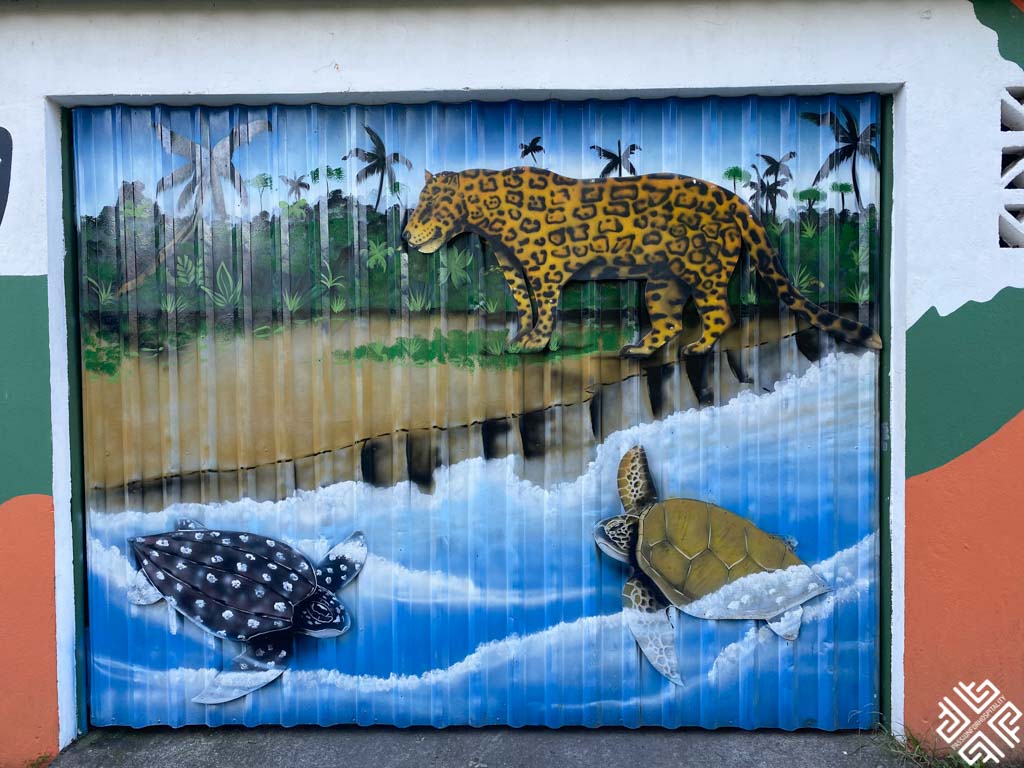
Go on a Night Tour of the Jungle
As vibrant as the jungle life is during the day, it is equally exciting during the night. If you are feeling a sense of adventure, then an evening tour is something that you will greatly enjoy. We joined an evening jungle walking tour of the Pachira Lodge Tortuguero, which has a dedicated marked trail that takes you around a part of the jungle.
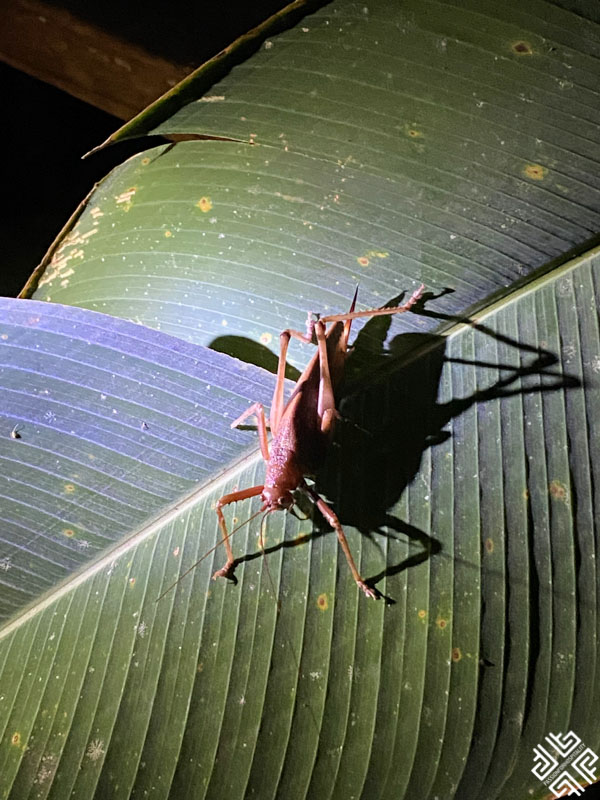
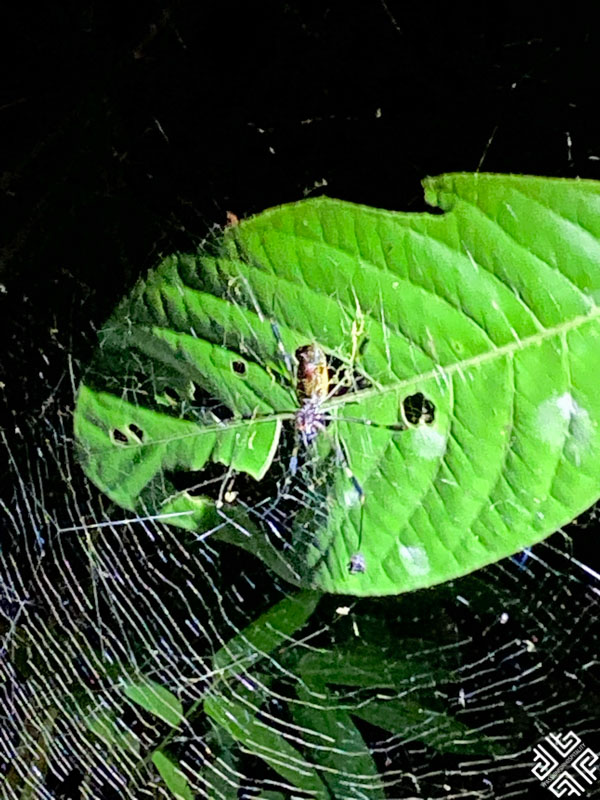
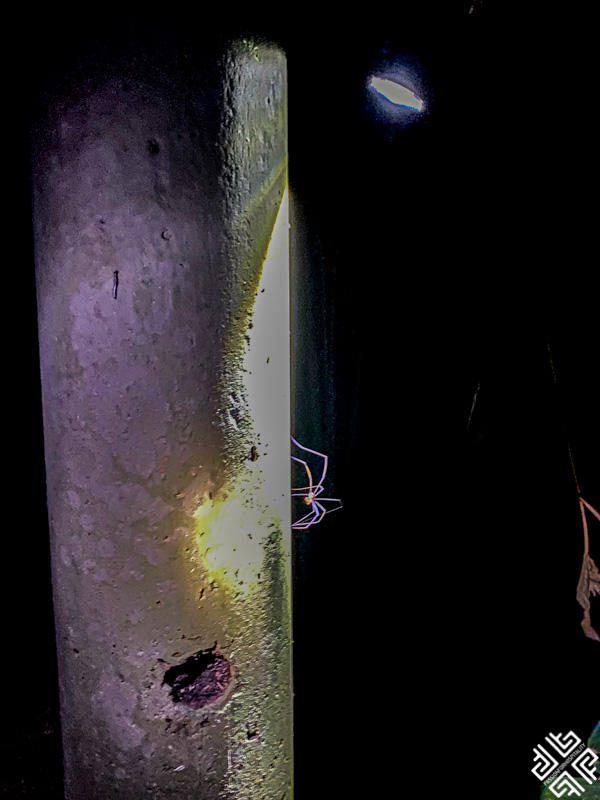
At night you can observe a different kind of species that come out looking for food or reproduction. From ants working relentlessly and methodically to spiders, crabs, tarantulas, and many more. There are a total of 230 mammal species in Costa Rica and 50% of them are bats, among them, there are also two white bat species. Did you know that one single ant colony has 5 million ants and the queen ant can live for around twenty years? On a night tour of the jungle, you can broaden your knowledge and come close to some of the most extraordinary species on Earth.
Where to stay in Tortuguero
There are several lodges in the area of Tortuguero that provide comfortable and modern facilities. During the two days at Tortuguero, we stayed at Pachira lodge which is located across from the Tortuguero Village (accessible by boat).
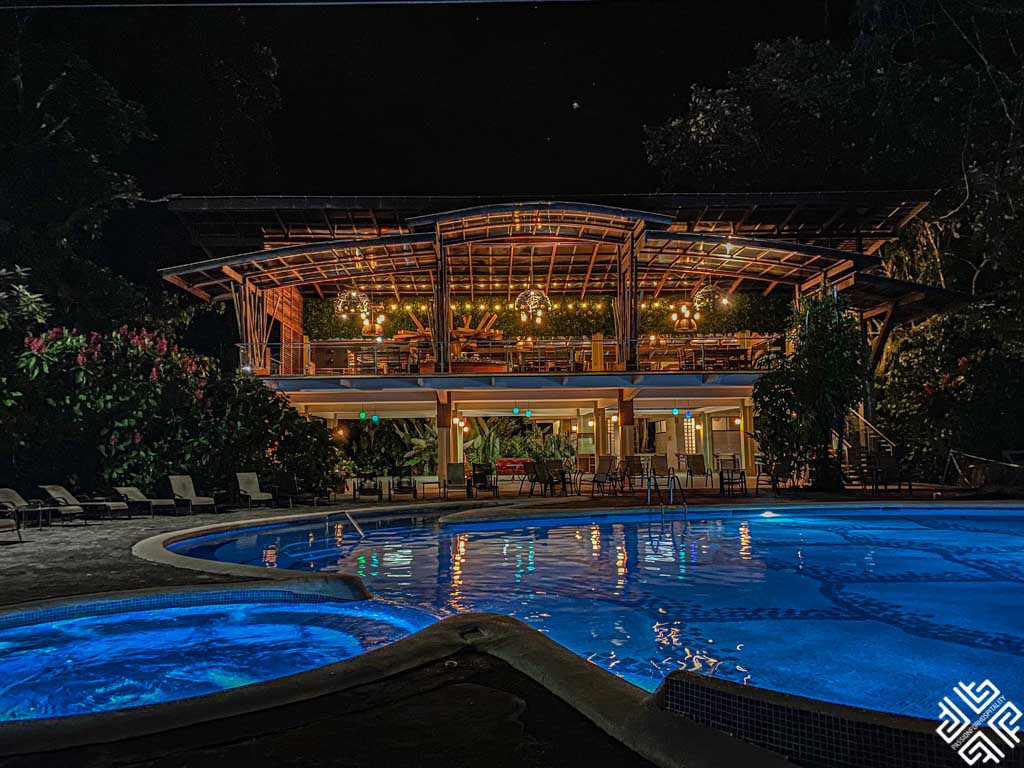
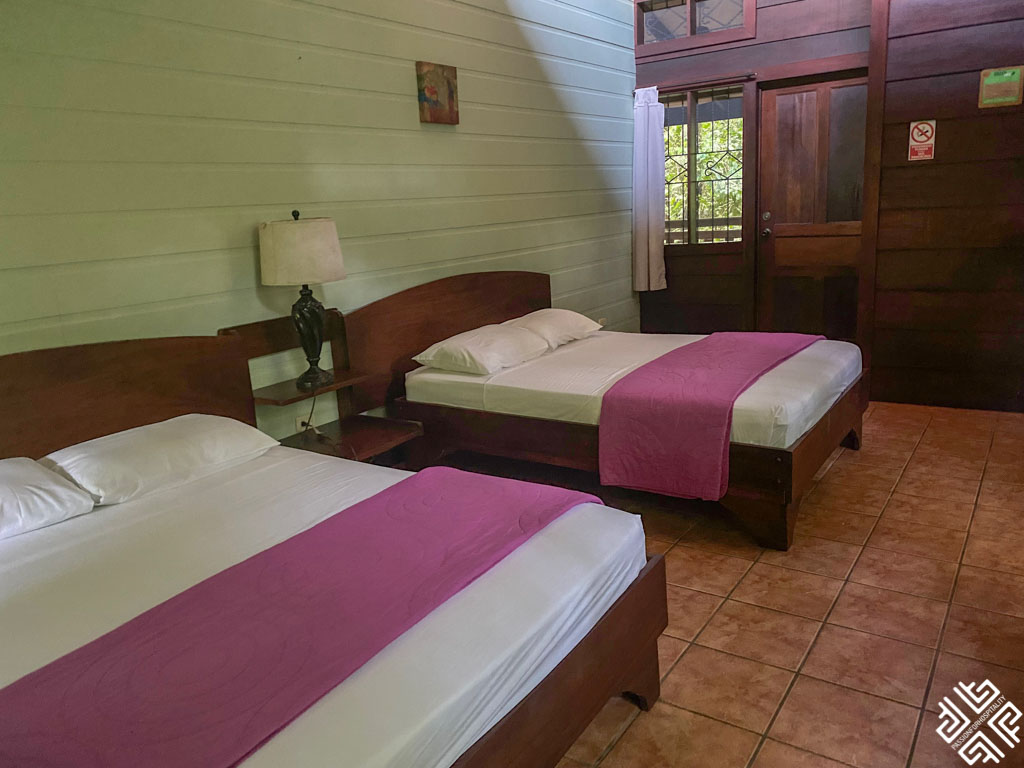

The lodge is located on 34 hectares of land and features 94 rooms with private bathrooms. At the lodge the main restaurant serves excellent breakfast, lunch and dinner, there are also spa facilities and two pool areas with bars where guests can enjoy a beverage or a cocktail throughout the day.
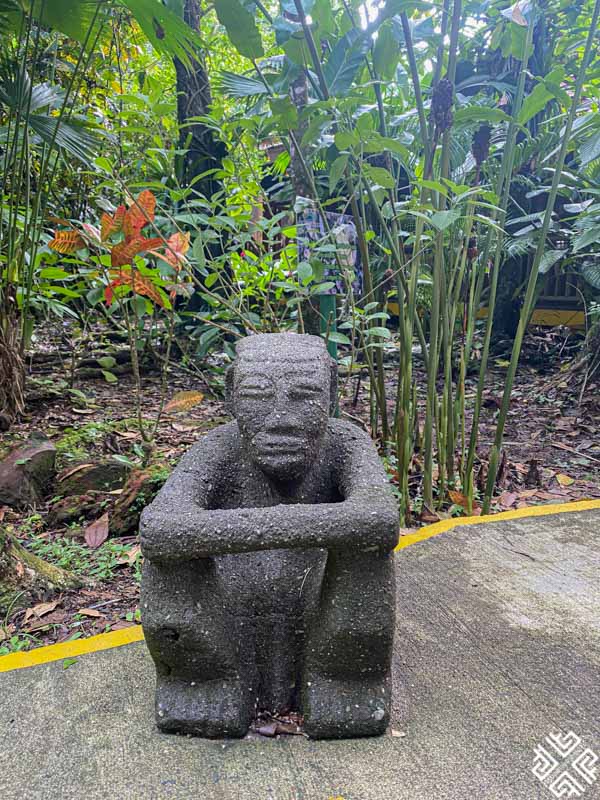
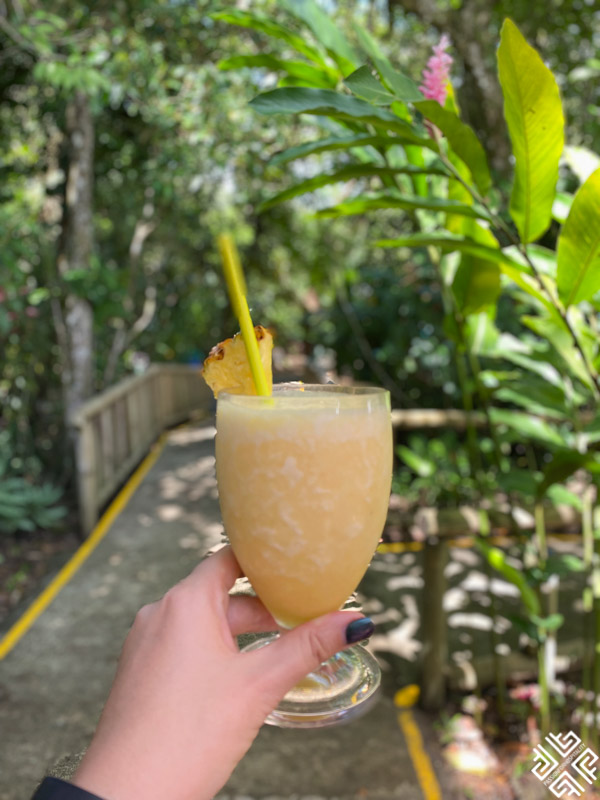
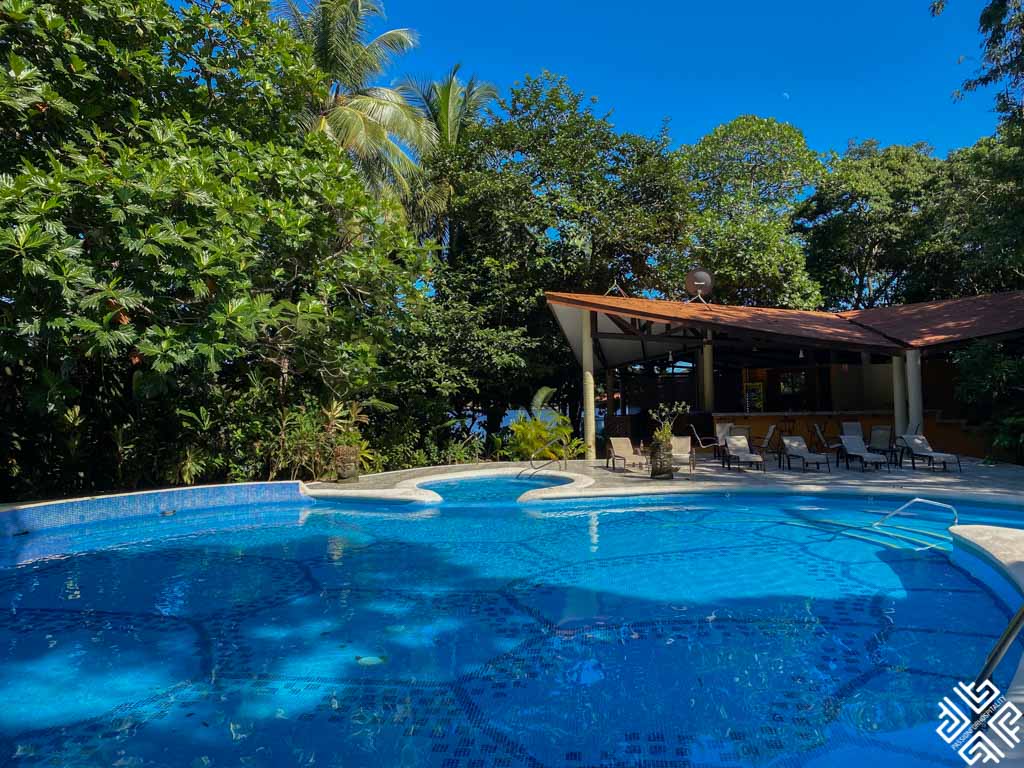
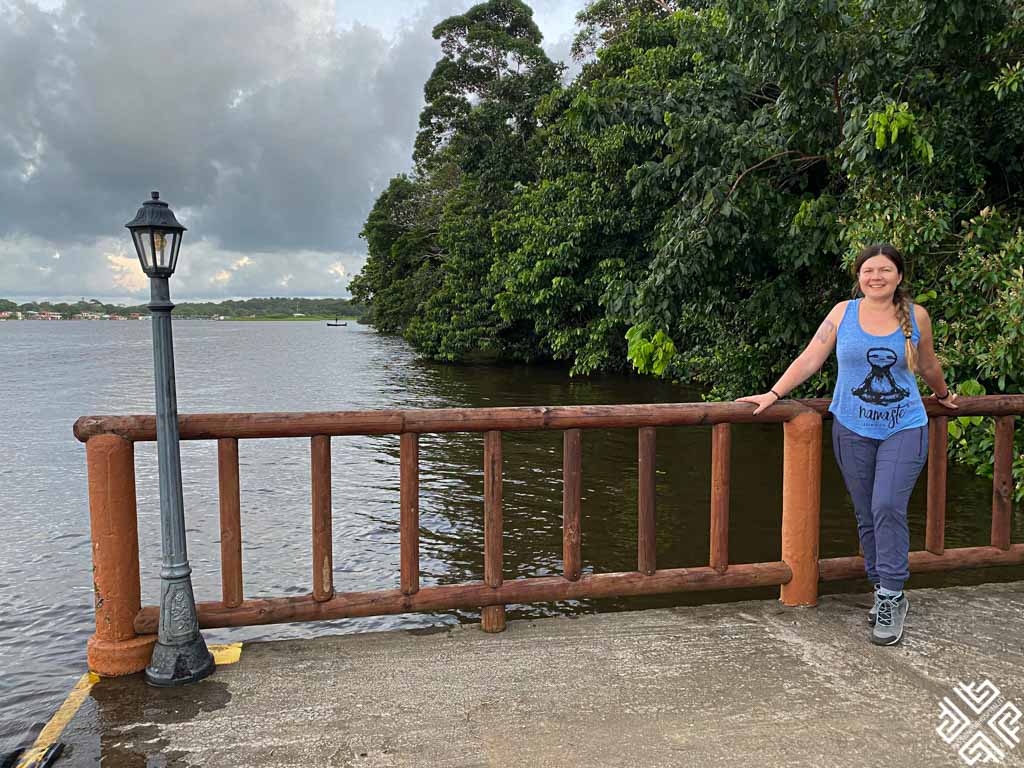
Watch my Youtube Video here:


